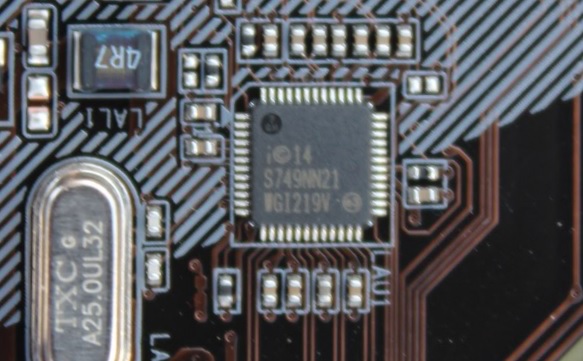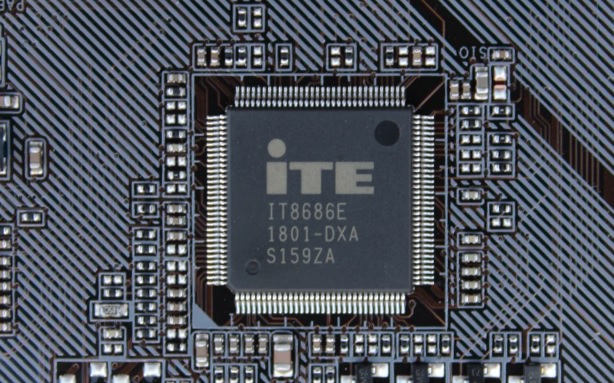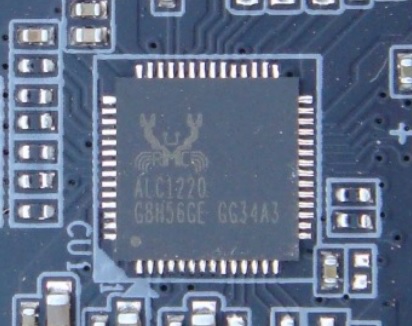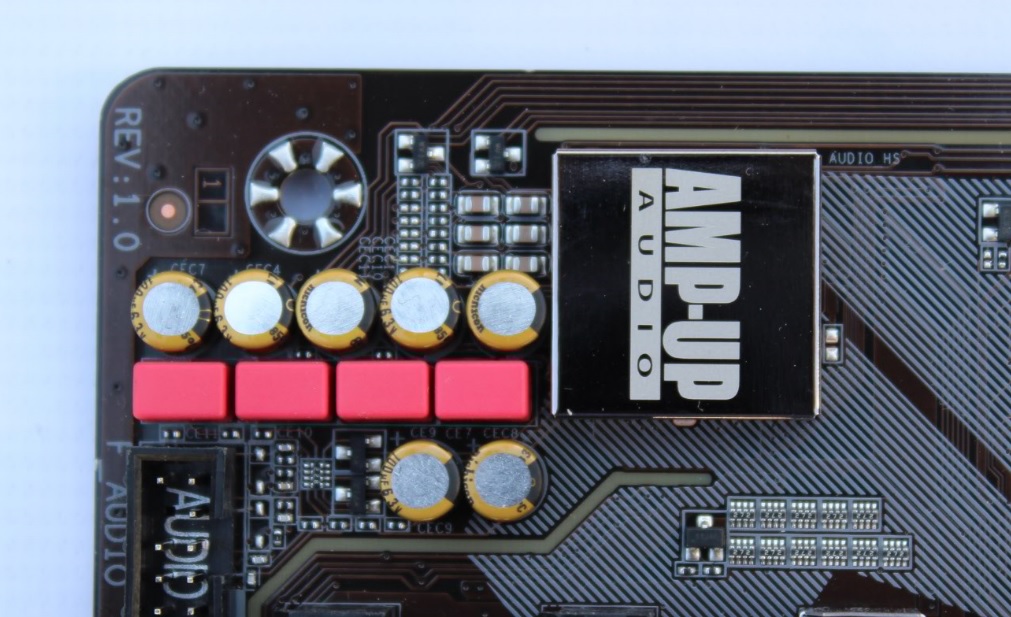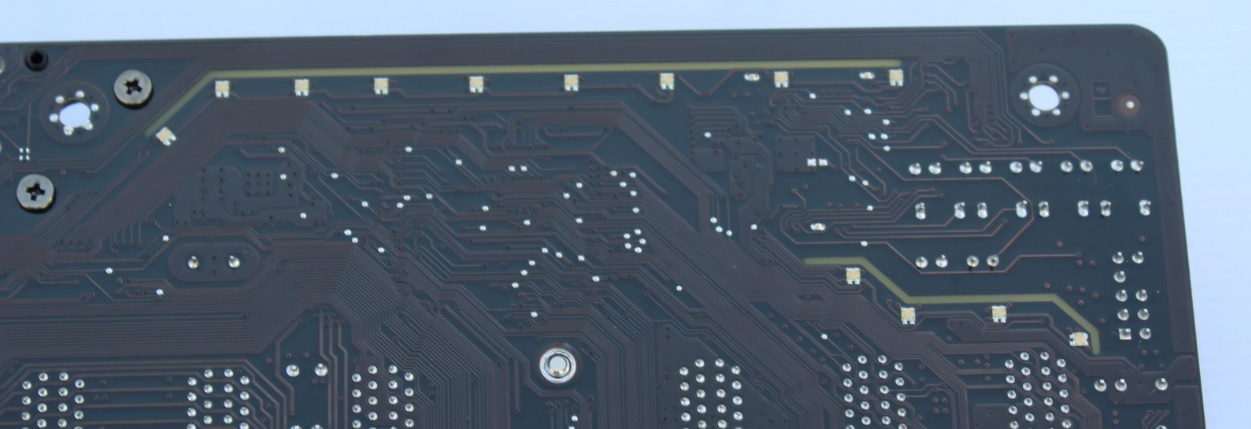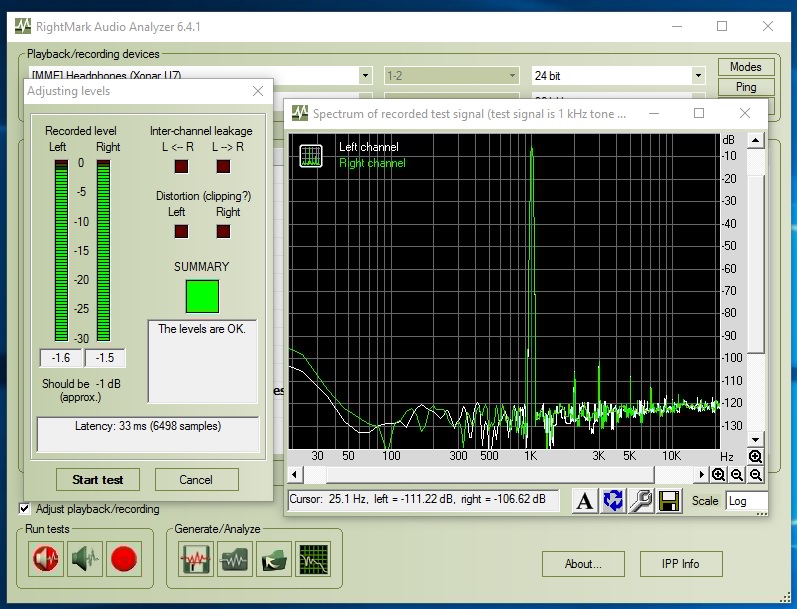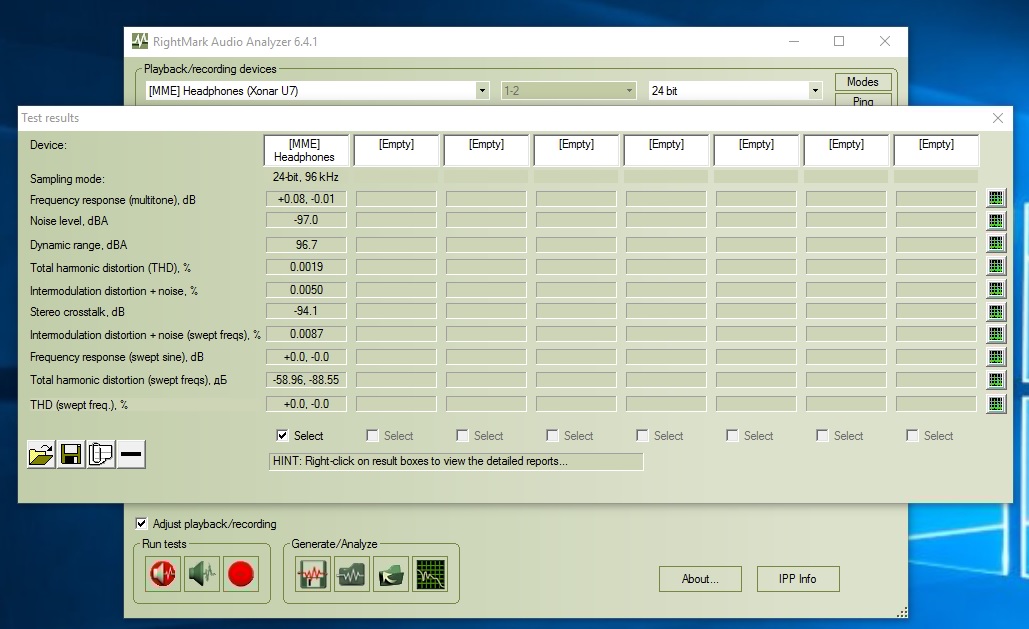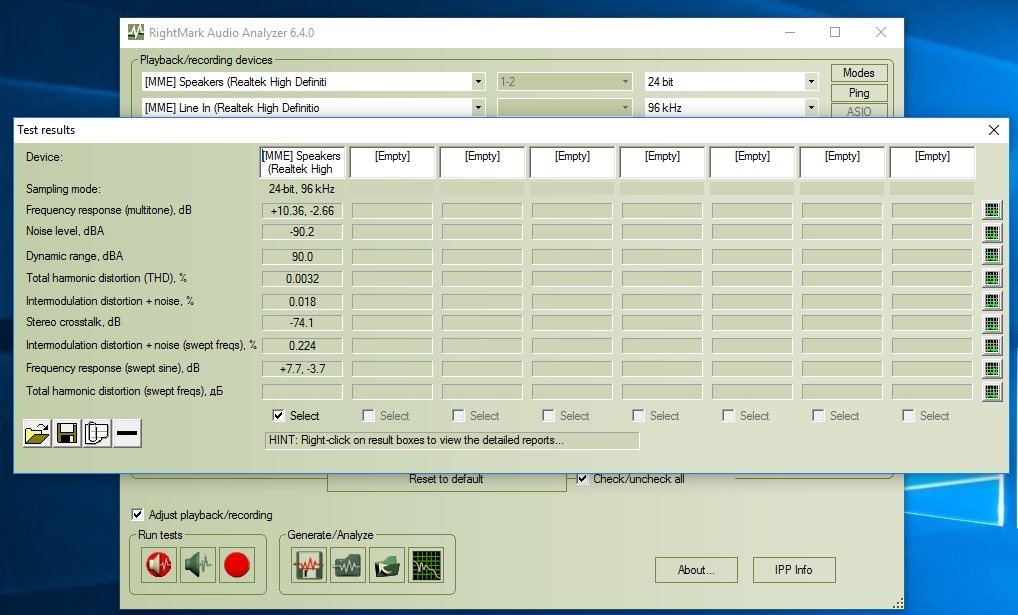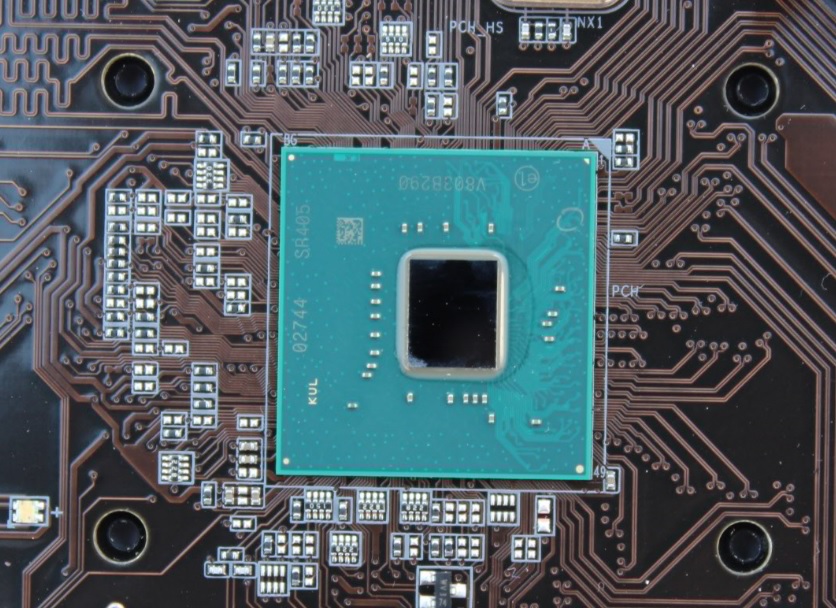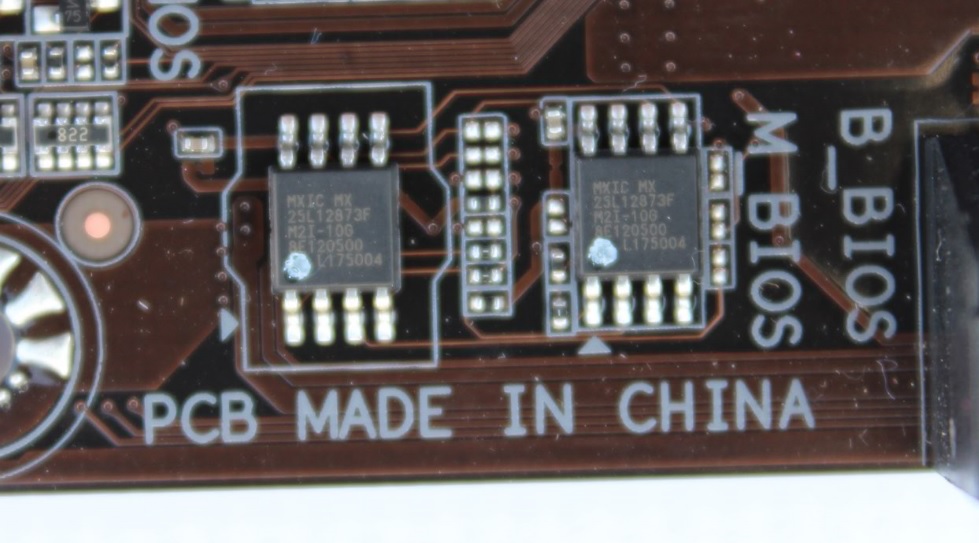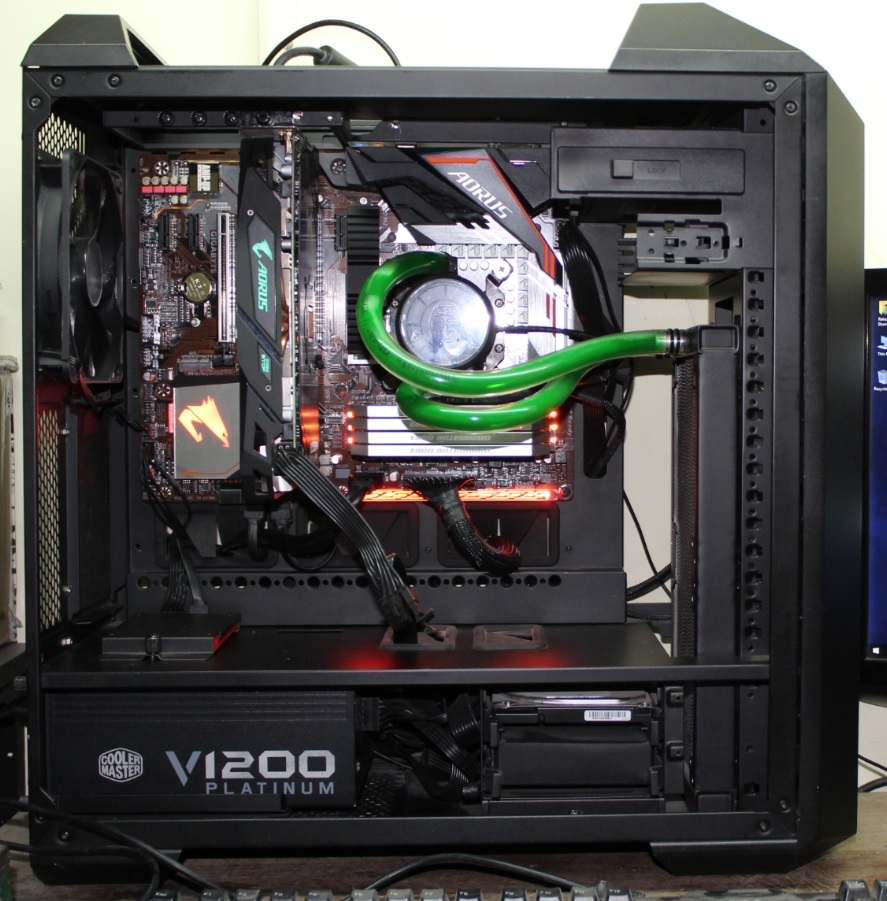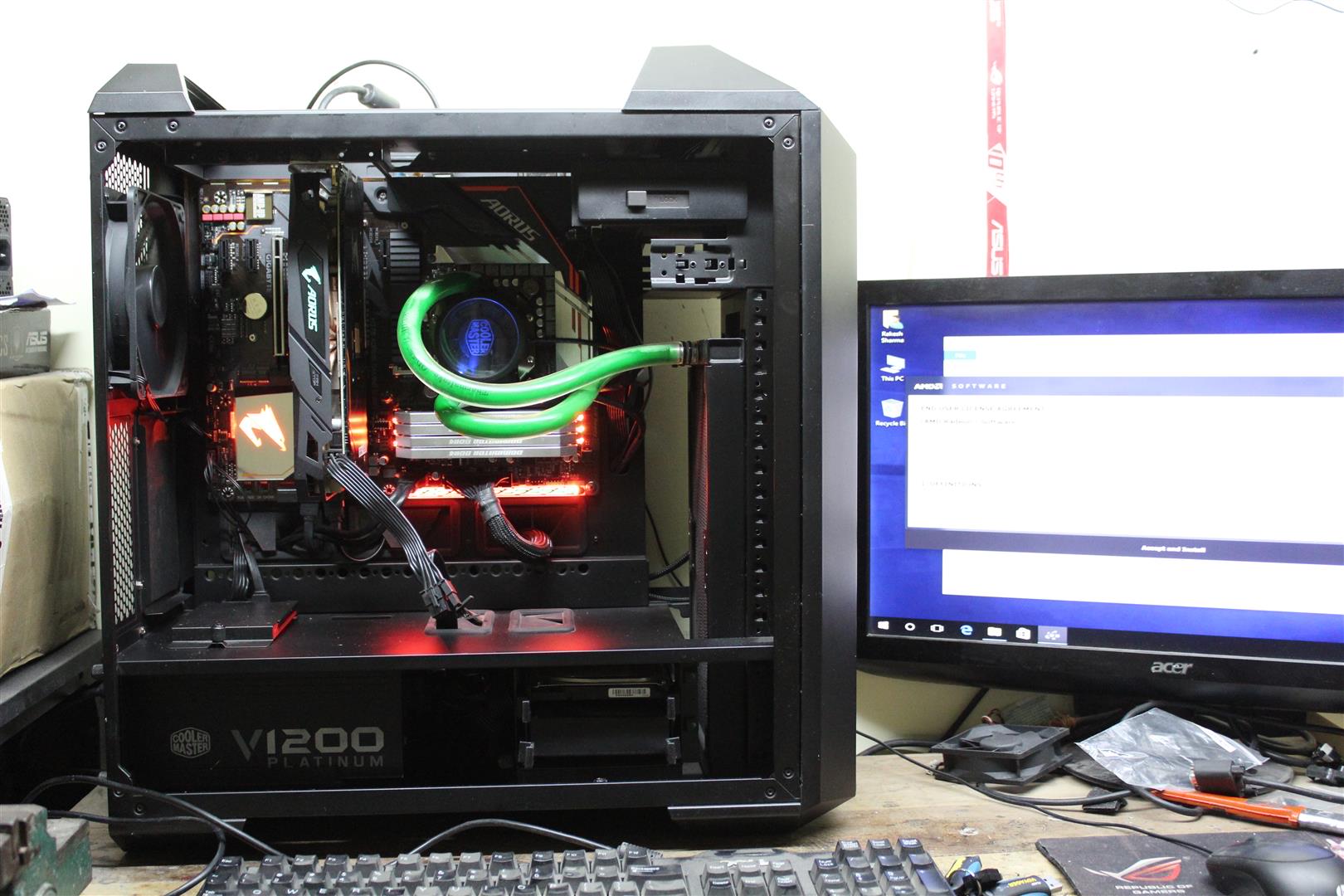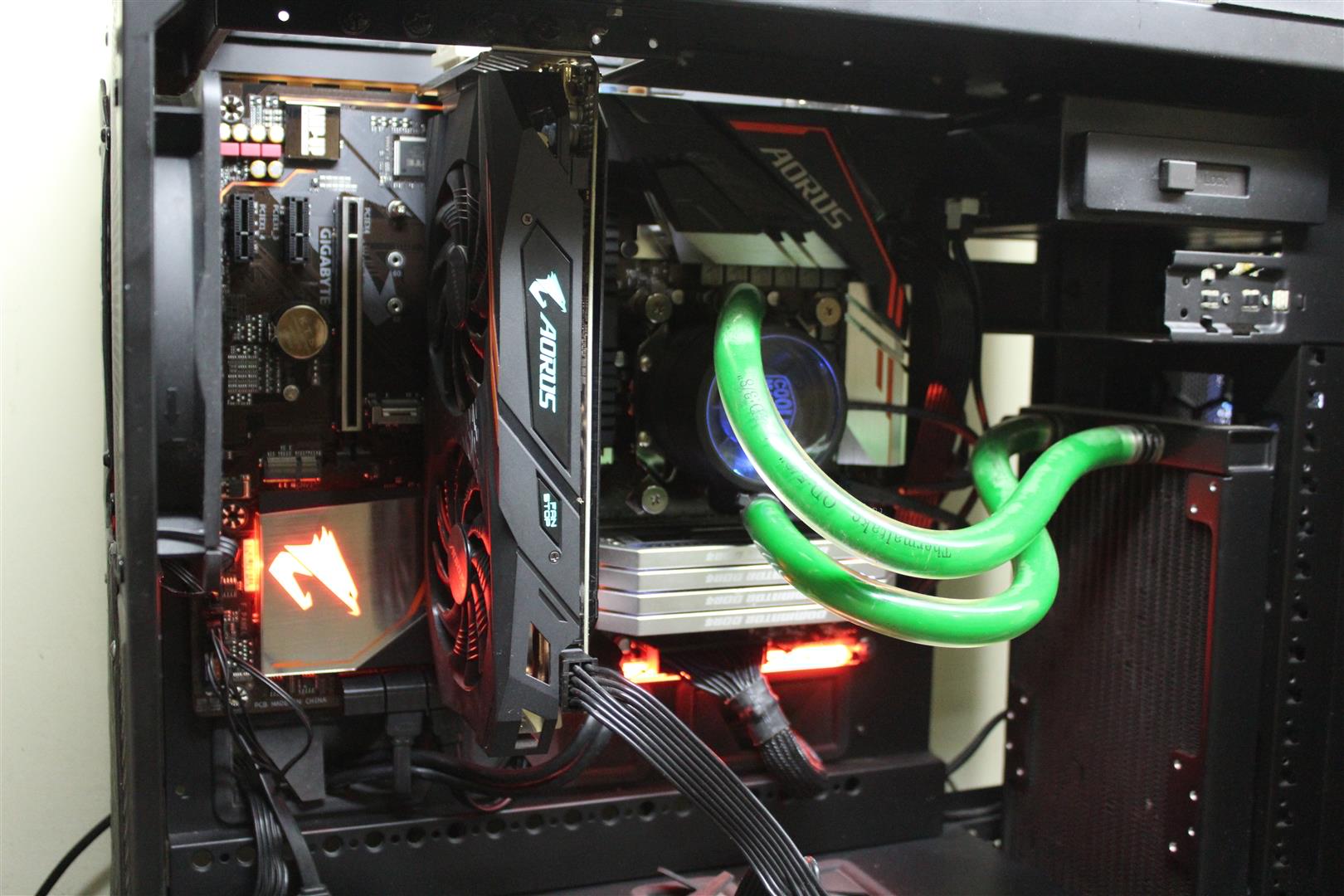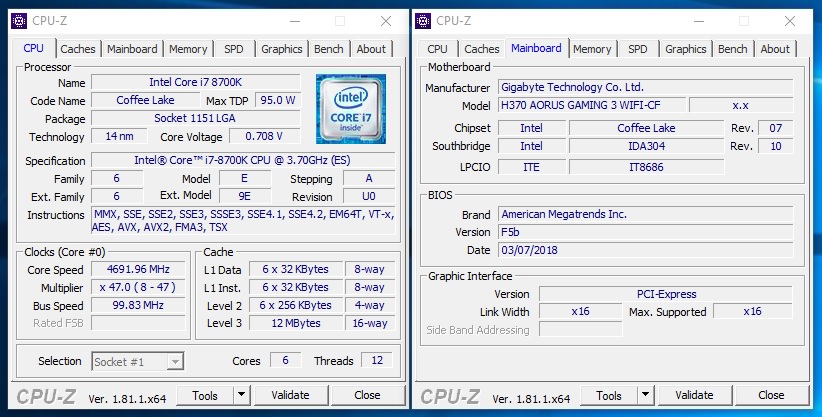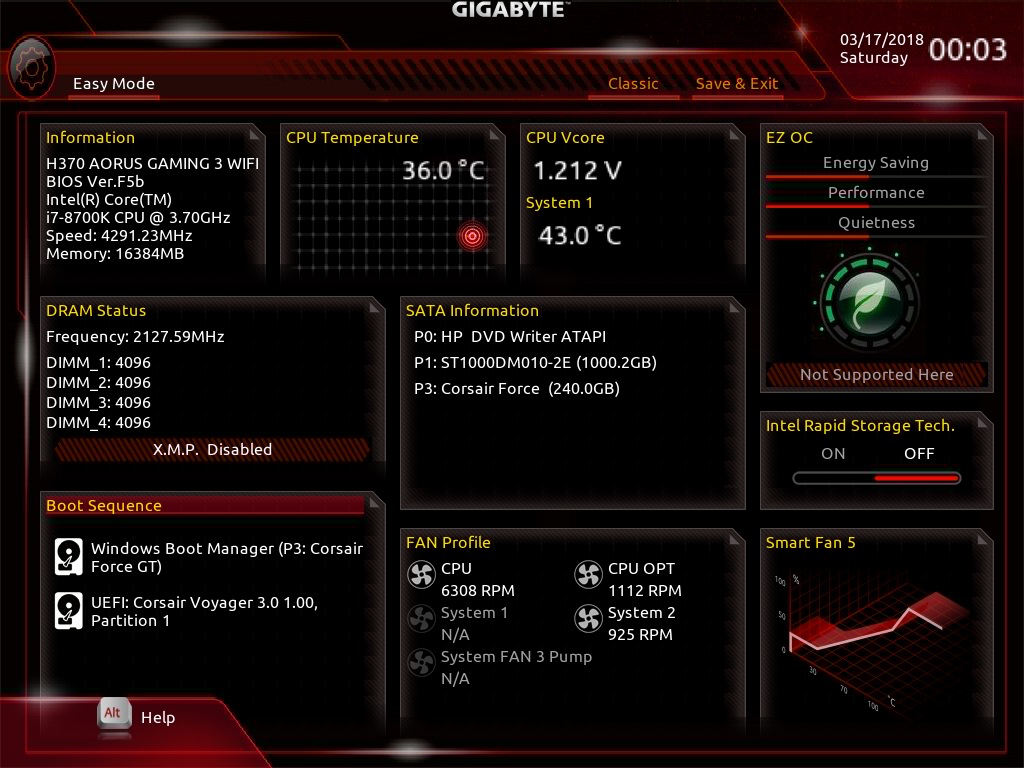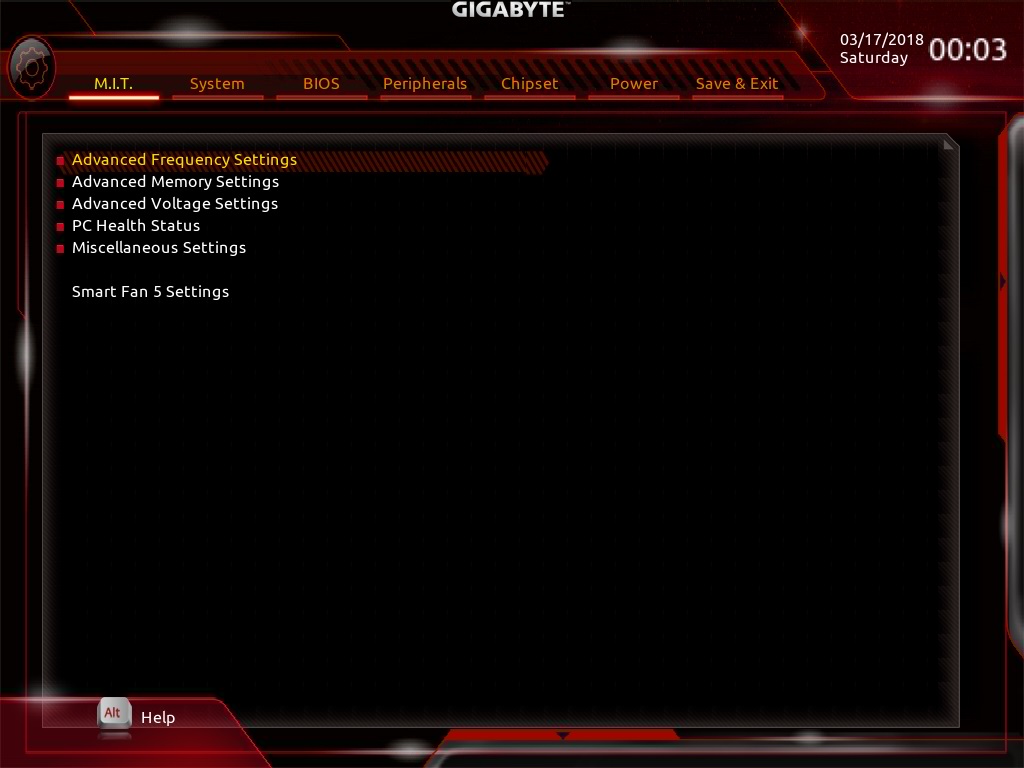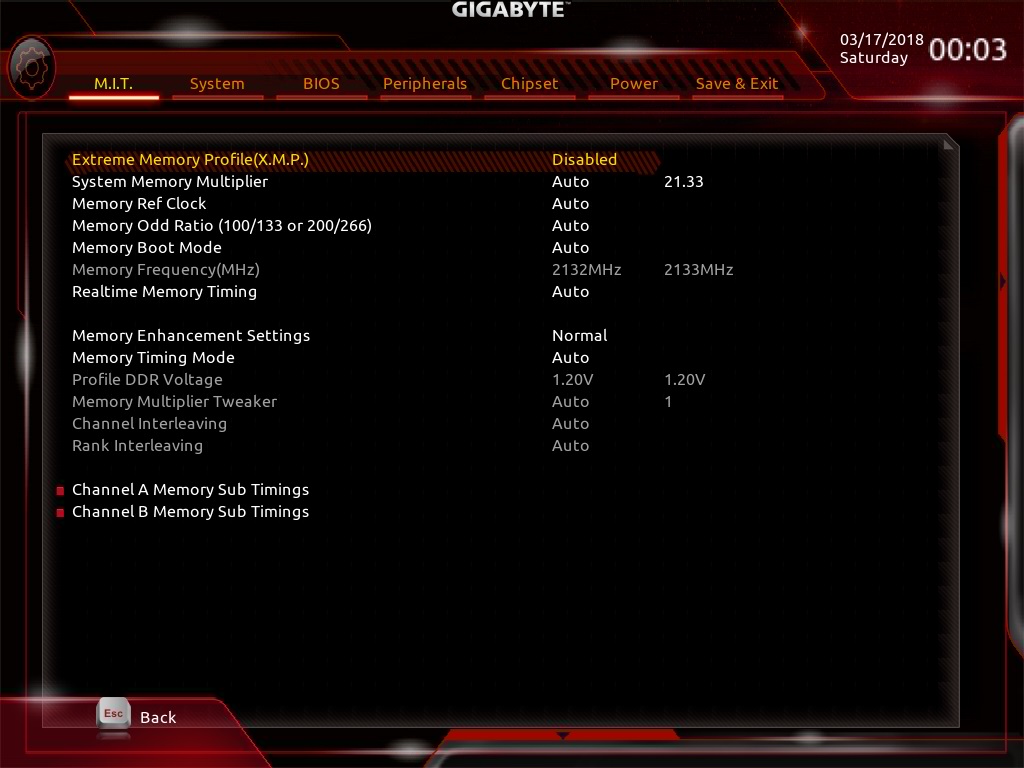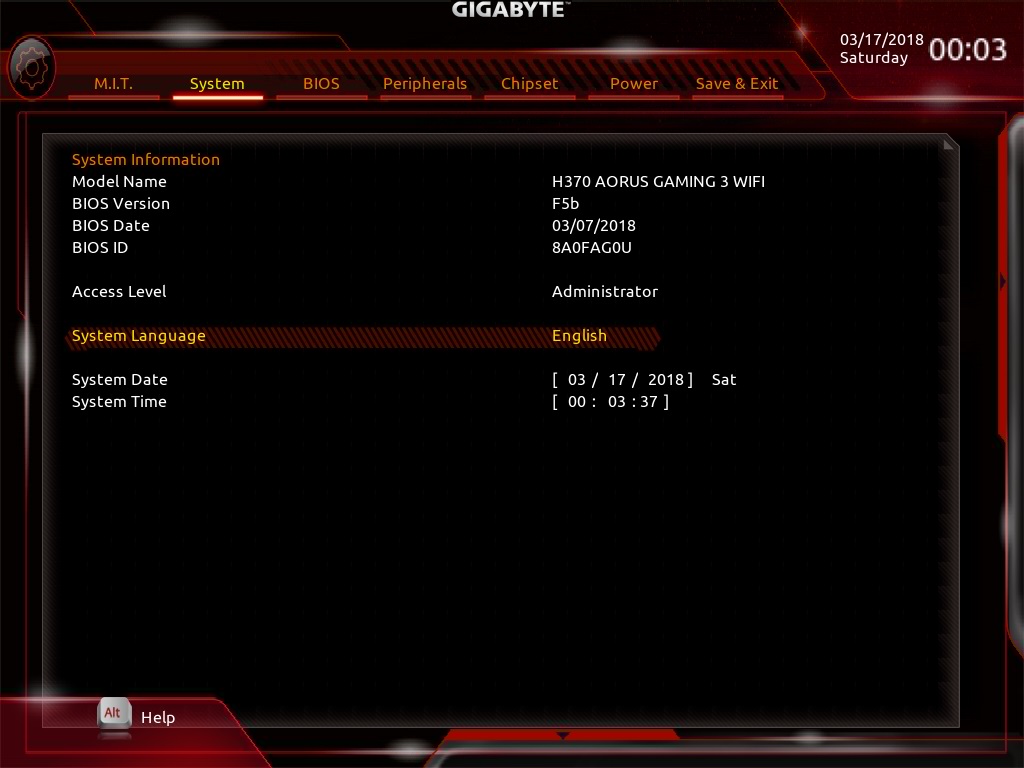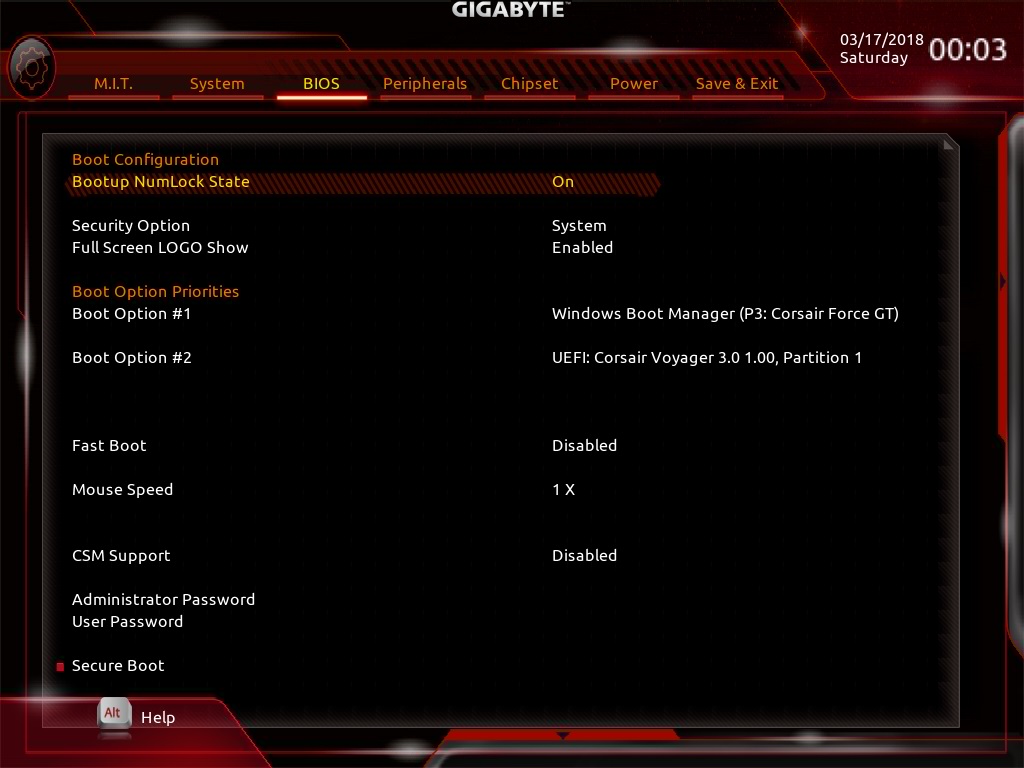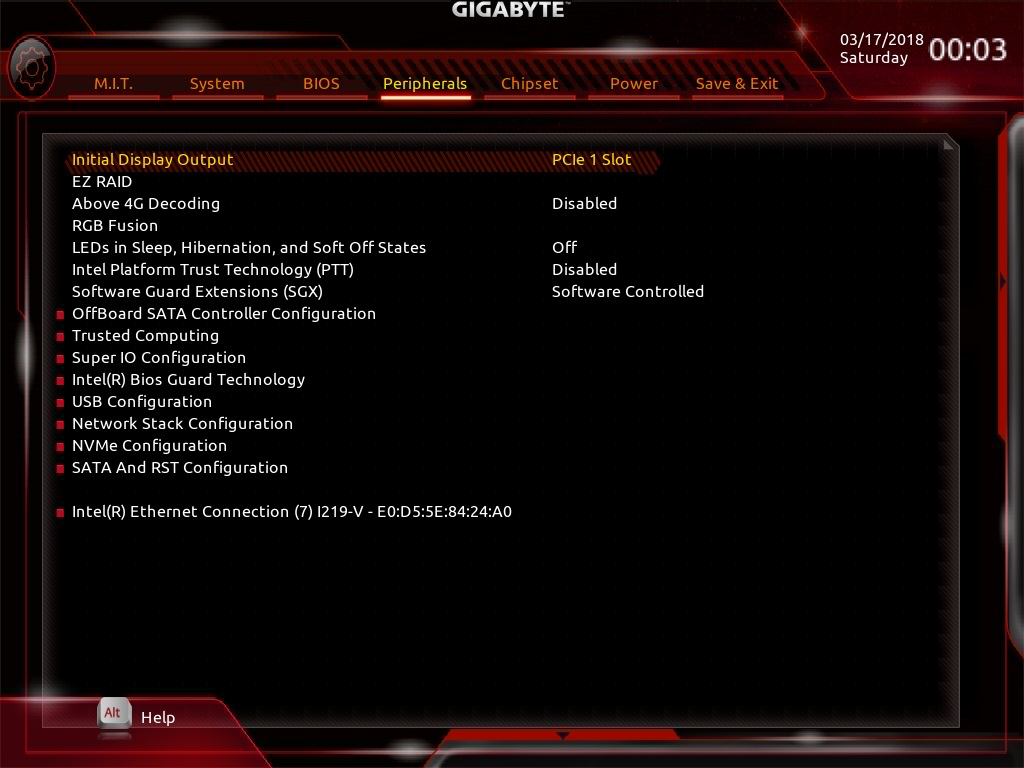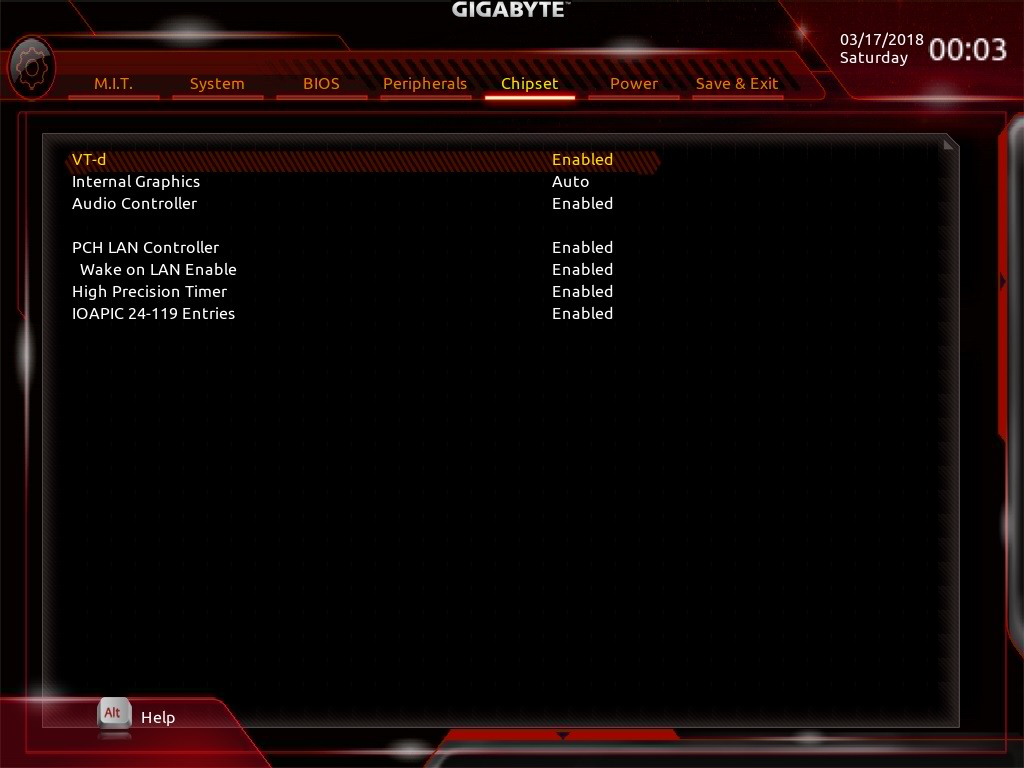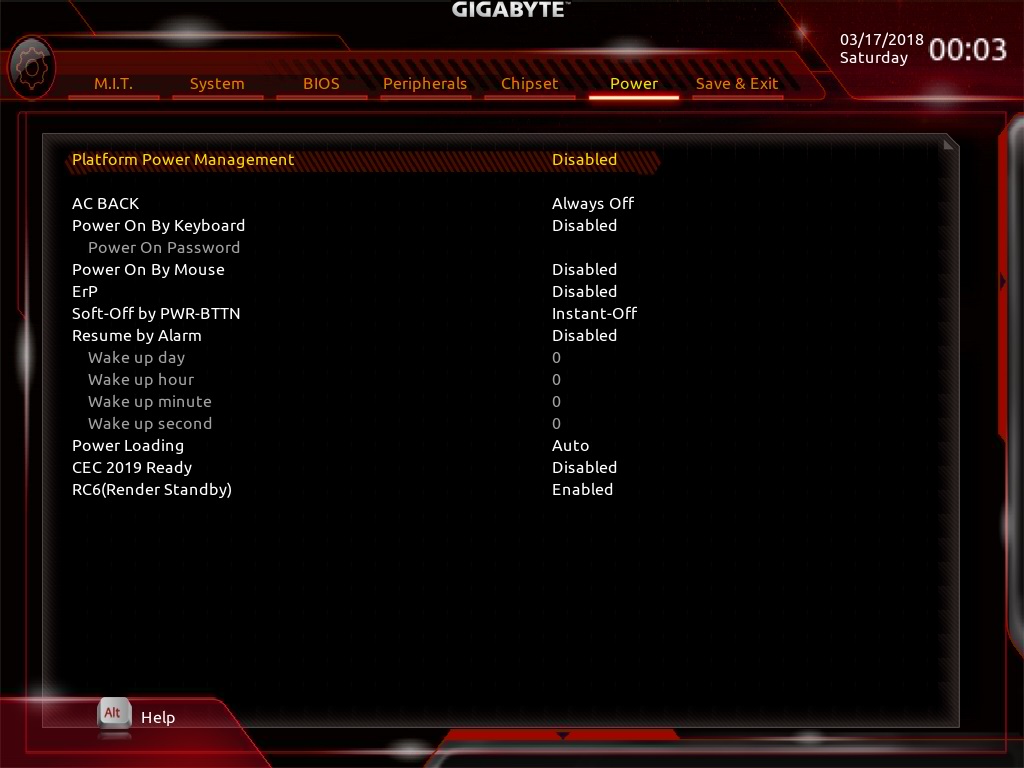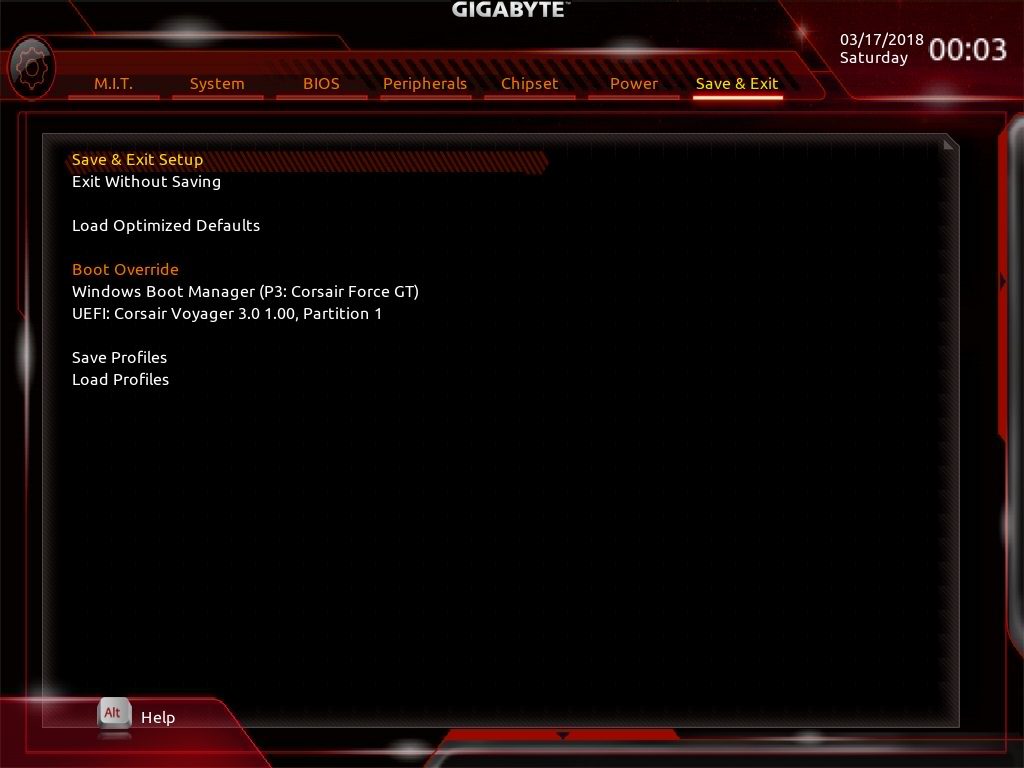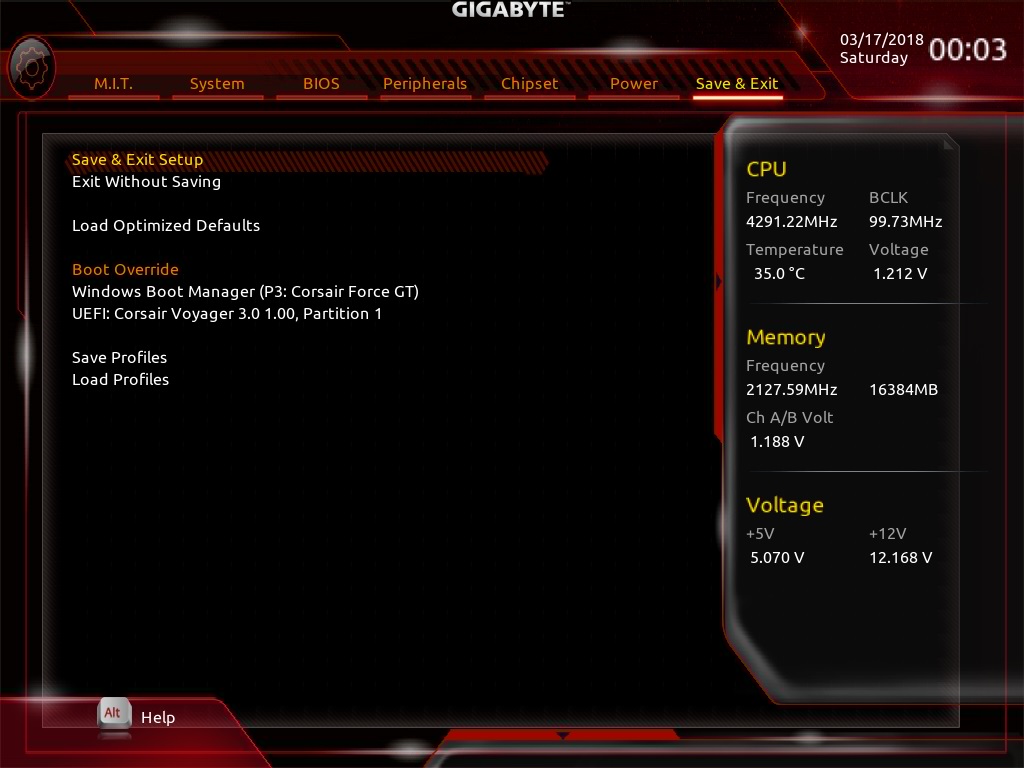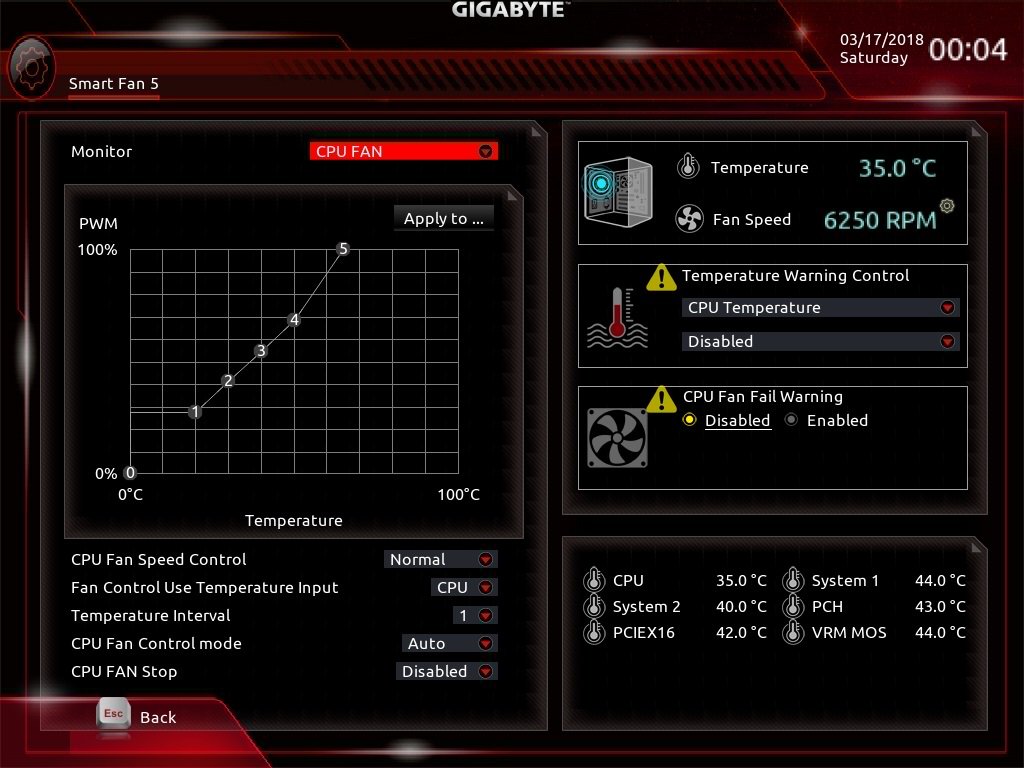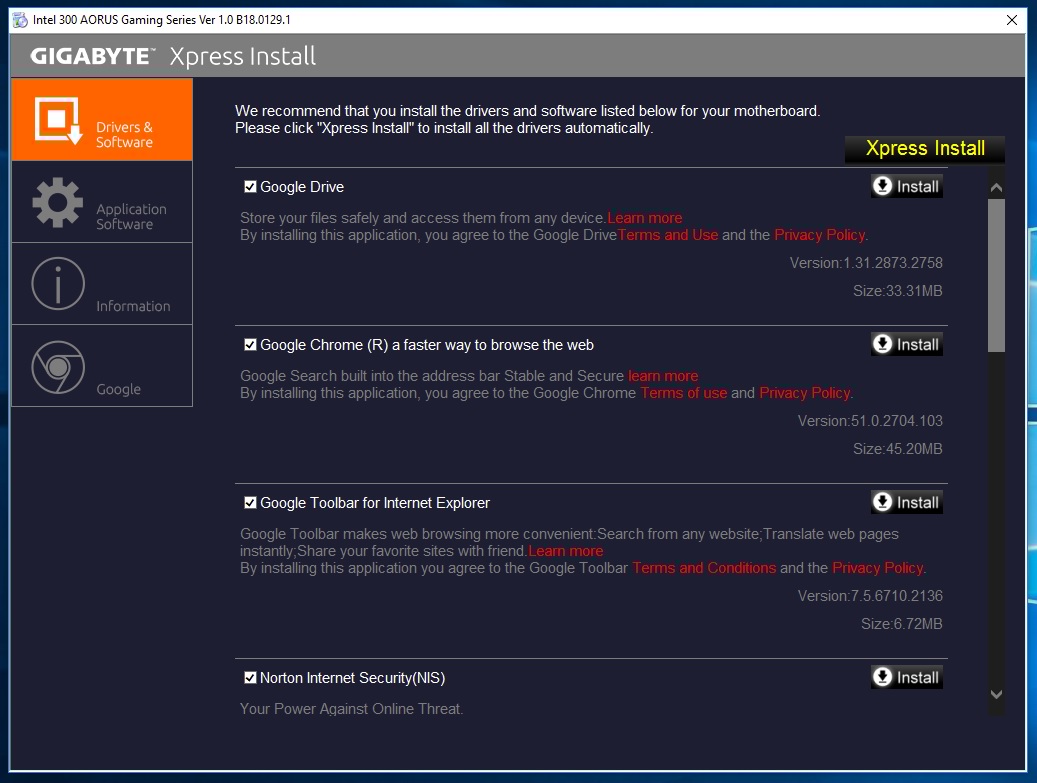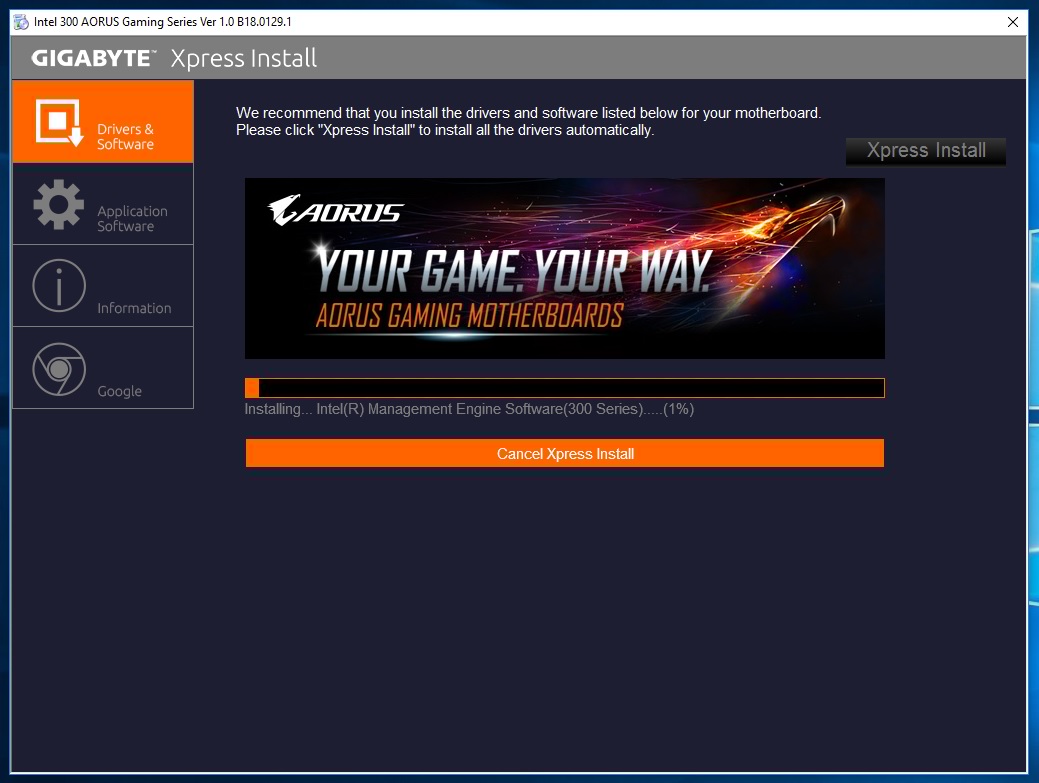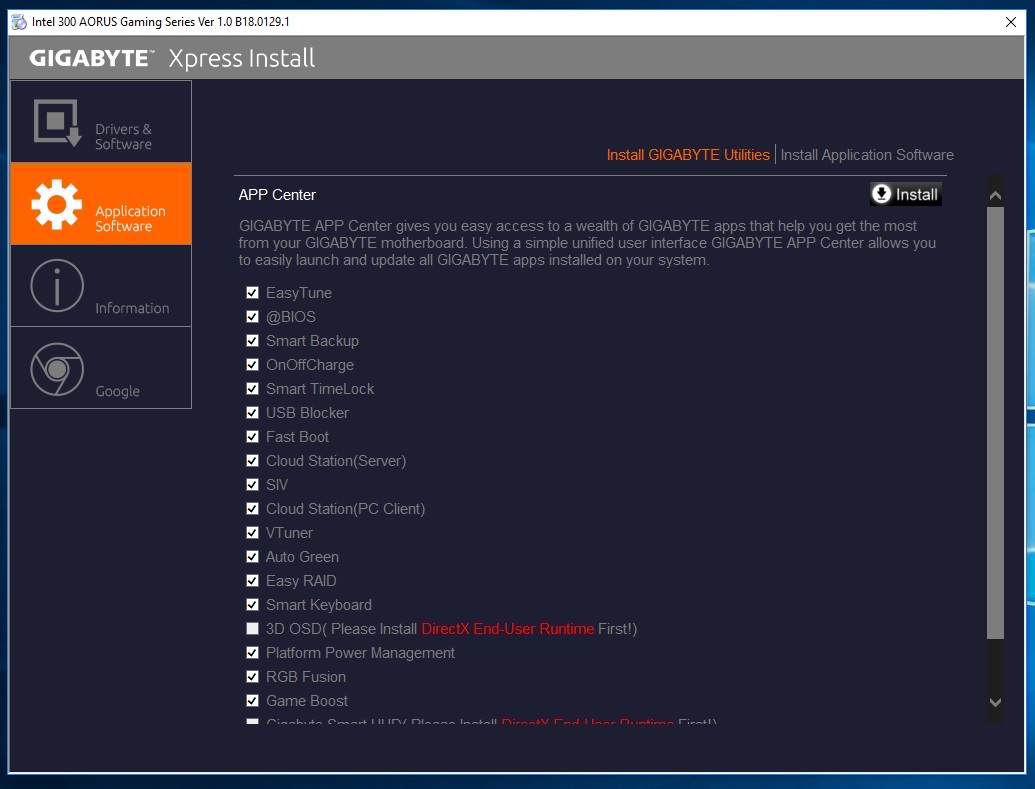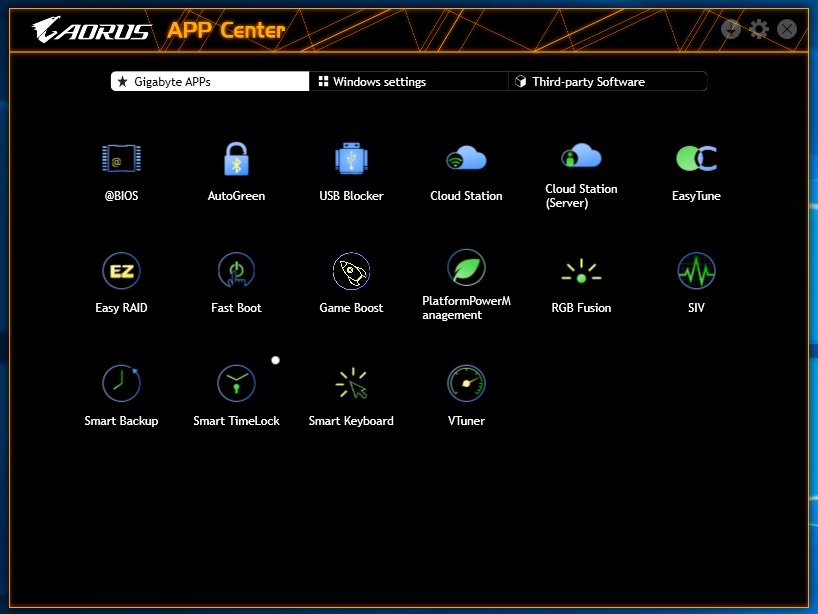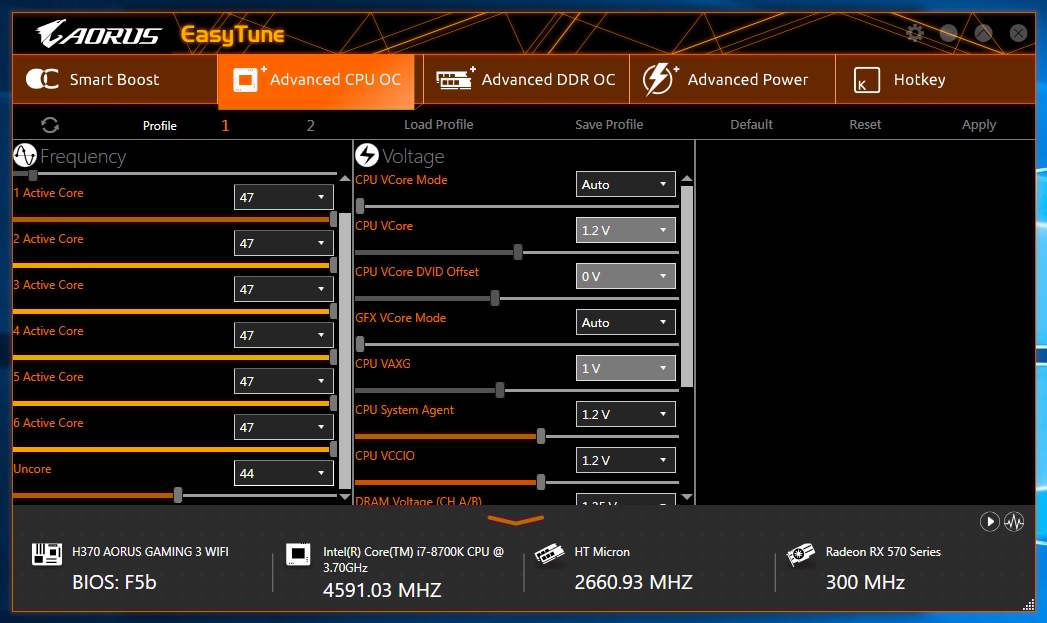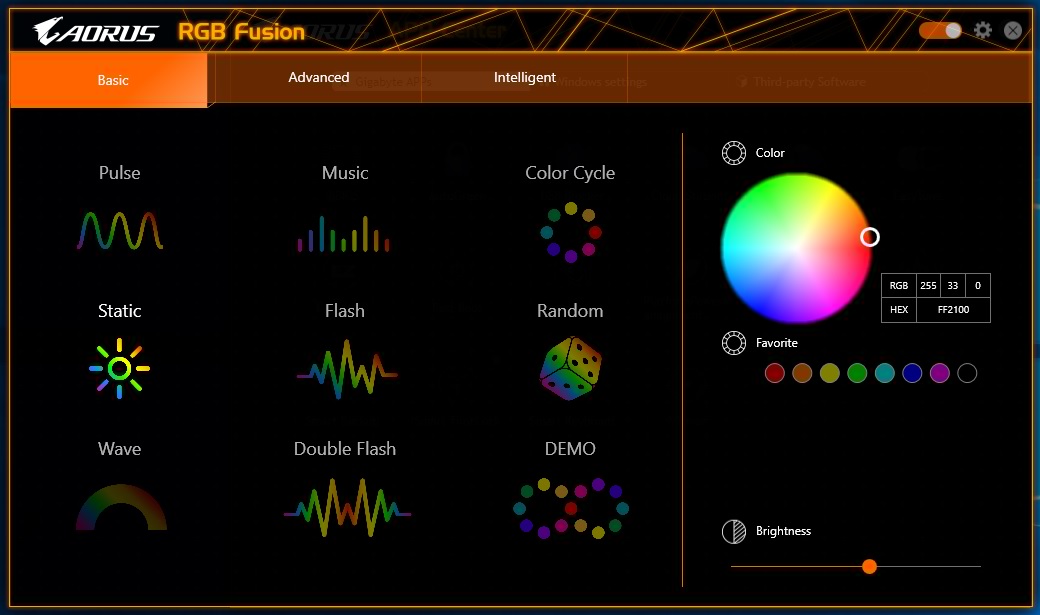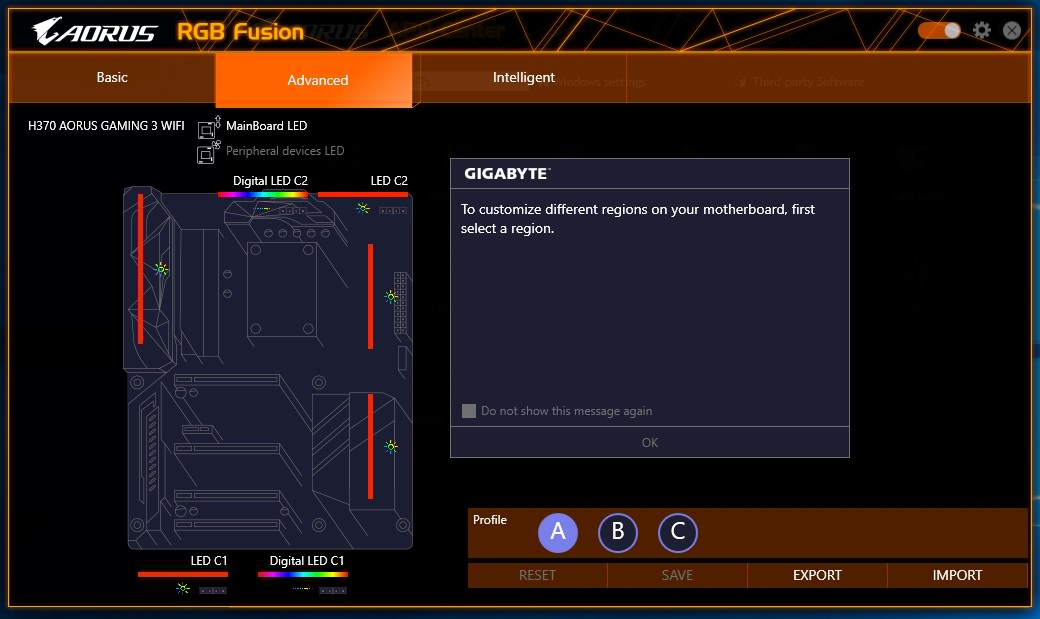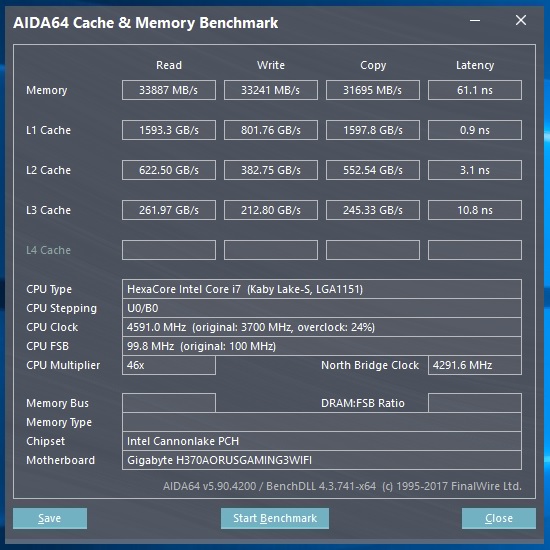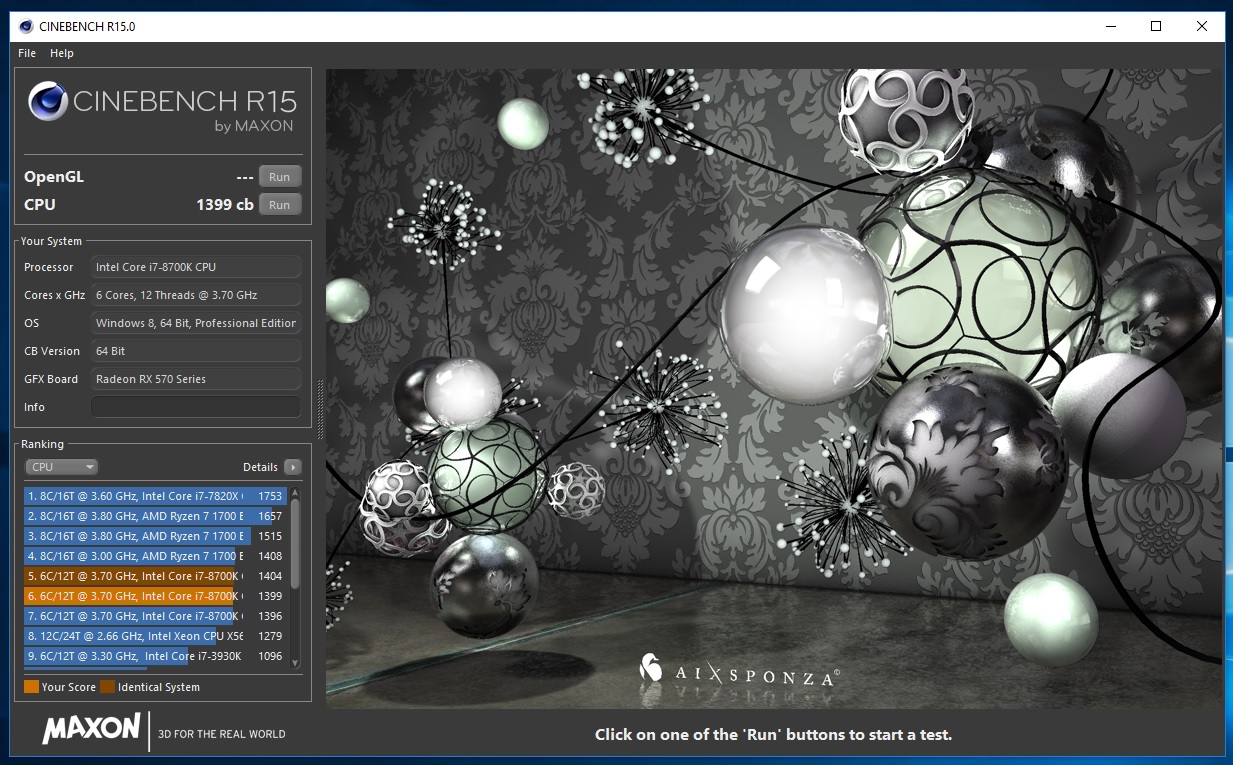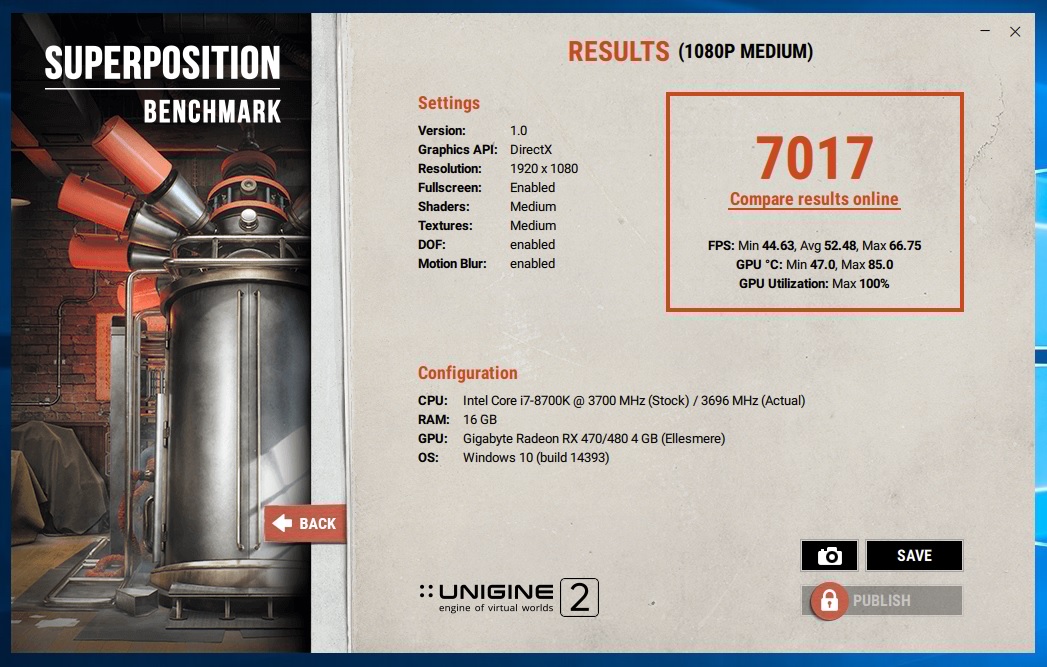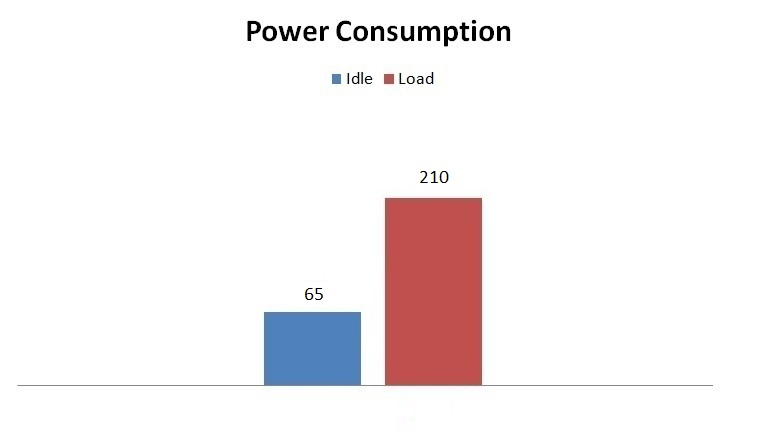AORUS H370 Gaming 3 WiFi Review
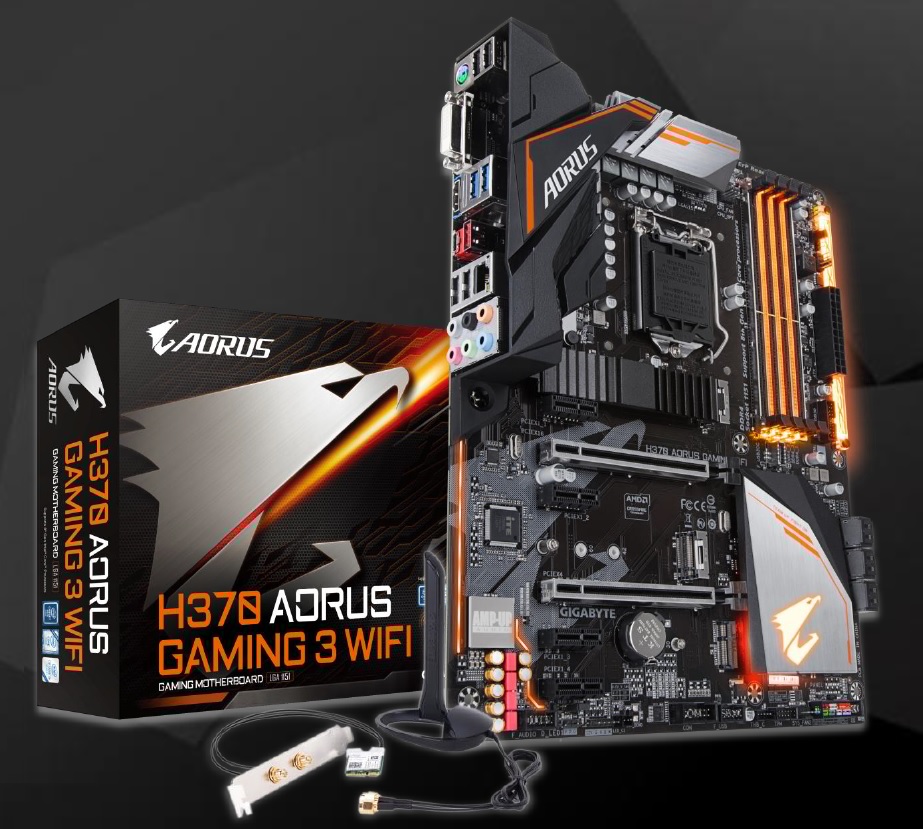
When the new Intel Coffee lake CPUs initially released, we only had the high-end Z370 chipset based motherboards available in market. But now Intel has officially announced their mainstream Intel chipset for Coffee lake support the H370 Express chipset, B360 Express chipset and the H310 Express chipset, all with socket LGA 1151support.
The Intel H370 chipset is the most interesting chipset for consumes. It is mostly the overclocking part cut out variant of Z370 chipset with the new Integrated Intel Wireless-AC Support (CNVi) and Intel RST SATA RAID 0, 1, 5,10 support.
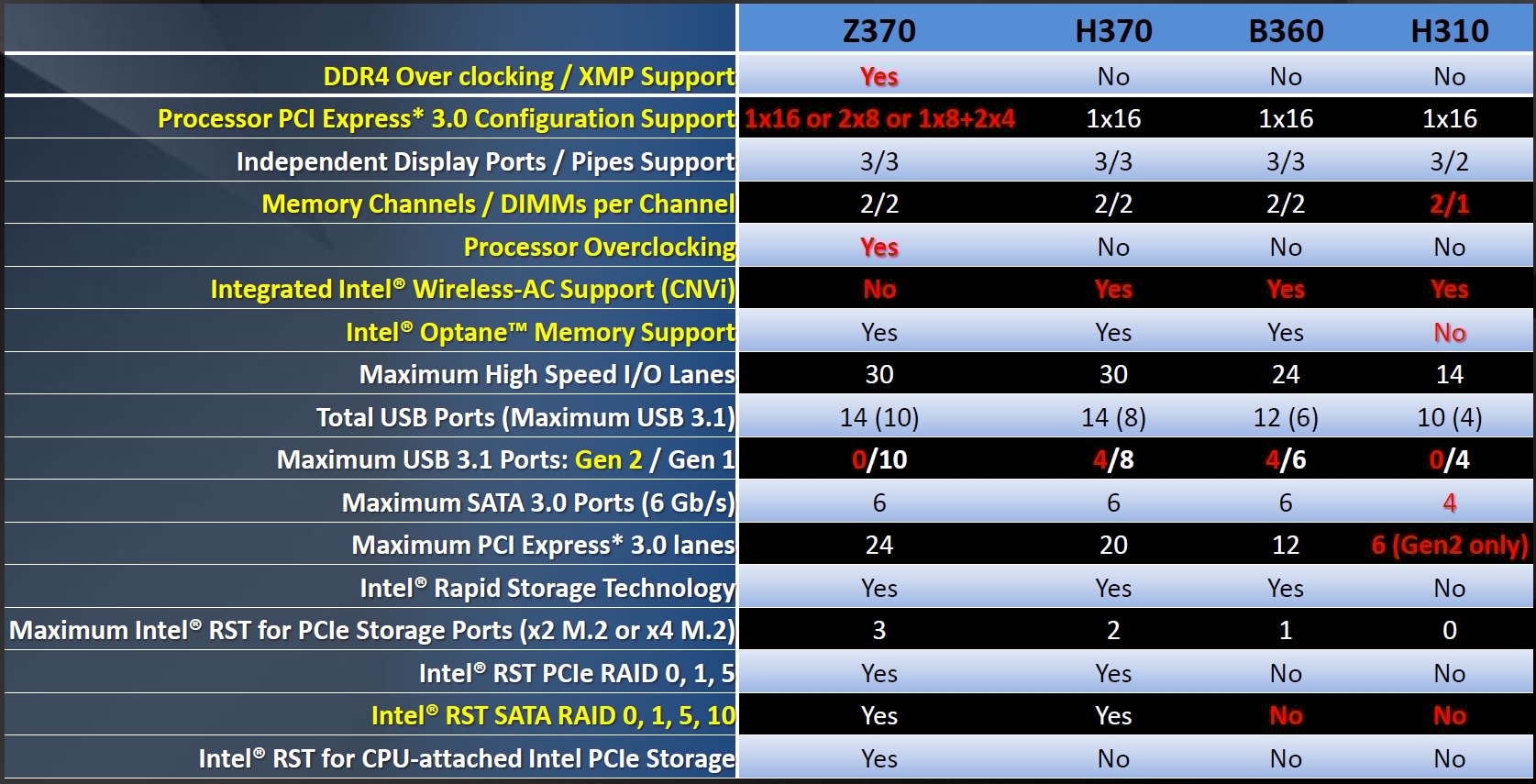
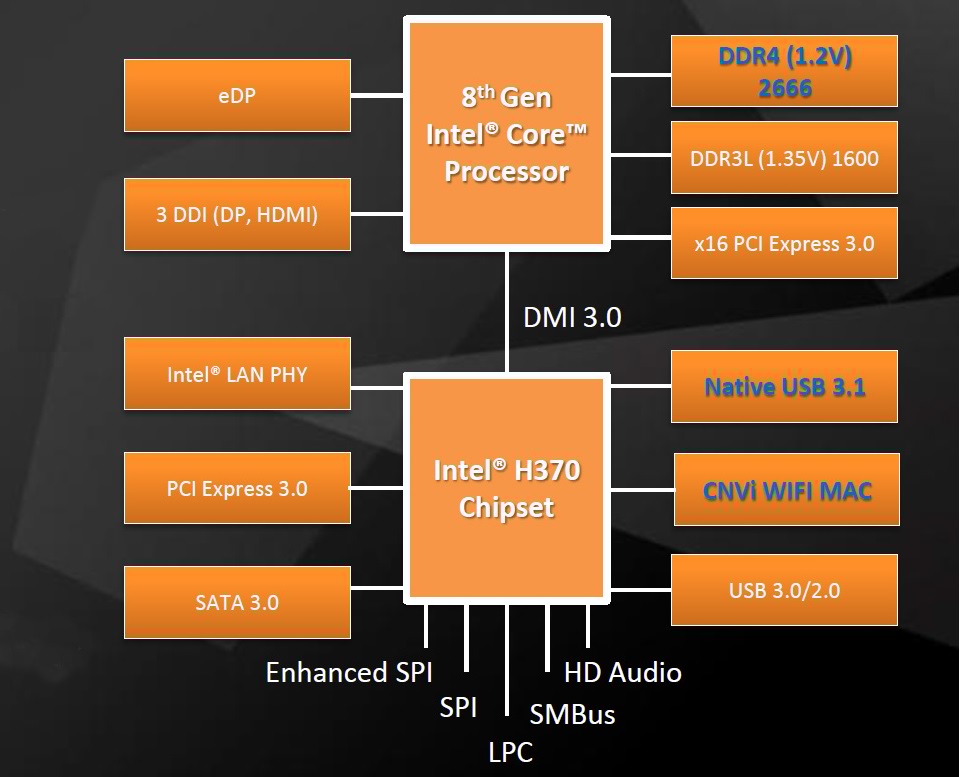
Below are few of the benefit uses gets with the Intel 8th Generation Core Processor
Today we are reviewing an Intel H370 chipset from AORUS, the AORUS H370 Gaming 3 WiFi motherboard a feature packed full ATX board supporting new Coffee lake processors, Dual Channel Non-ECC Unbuffered DDR4, Intel® CNVi 802.11ac Wave2 2T2R WIFI, RGB FUSION with Multi-Zone Digital LED Light support and more.
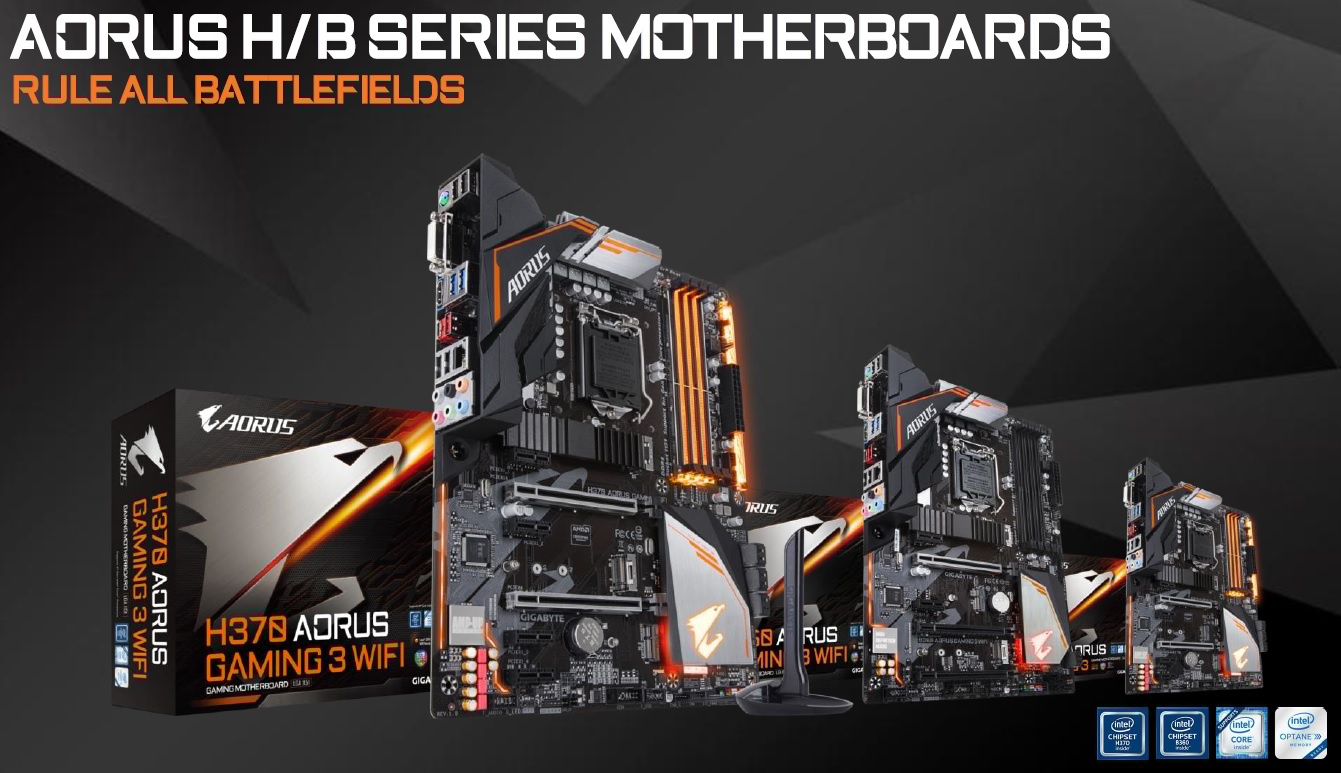
Now let’s see what this new Intel H370 chipset based AORUS gaming board have for us.
Features
Specifications
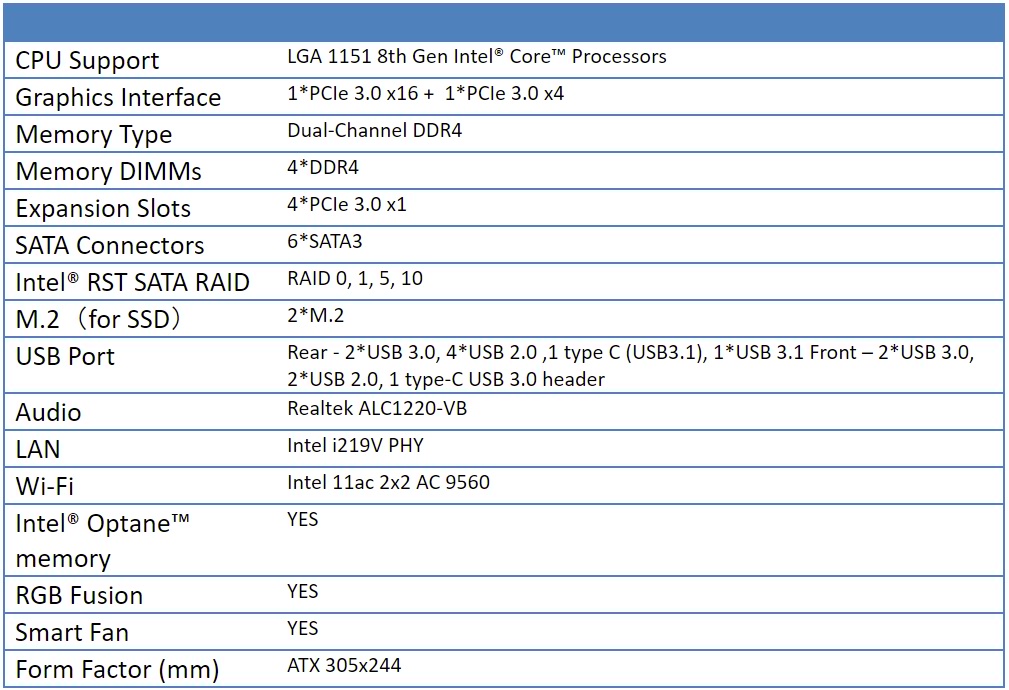
Package
Looking at the front of the box, we see AORUS logo with motherboard model no. in big at center of the box. At the rear of the box, we find that AORUS goes into great detail on the specifications of the motherboard
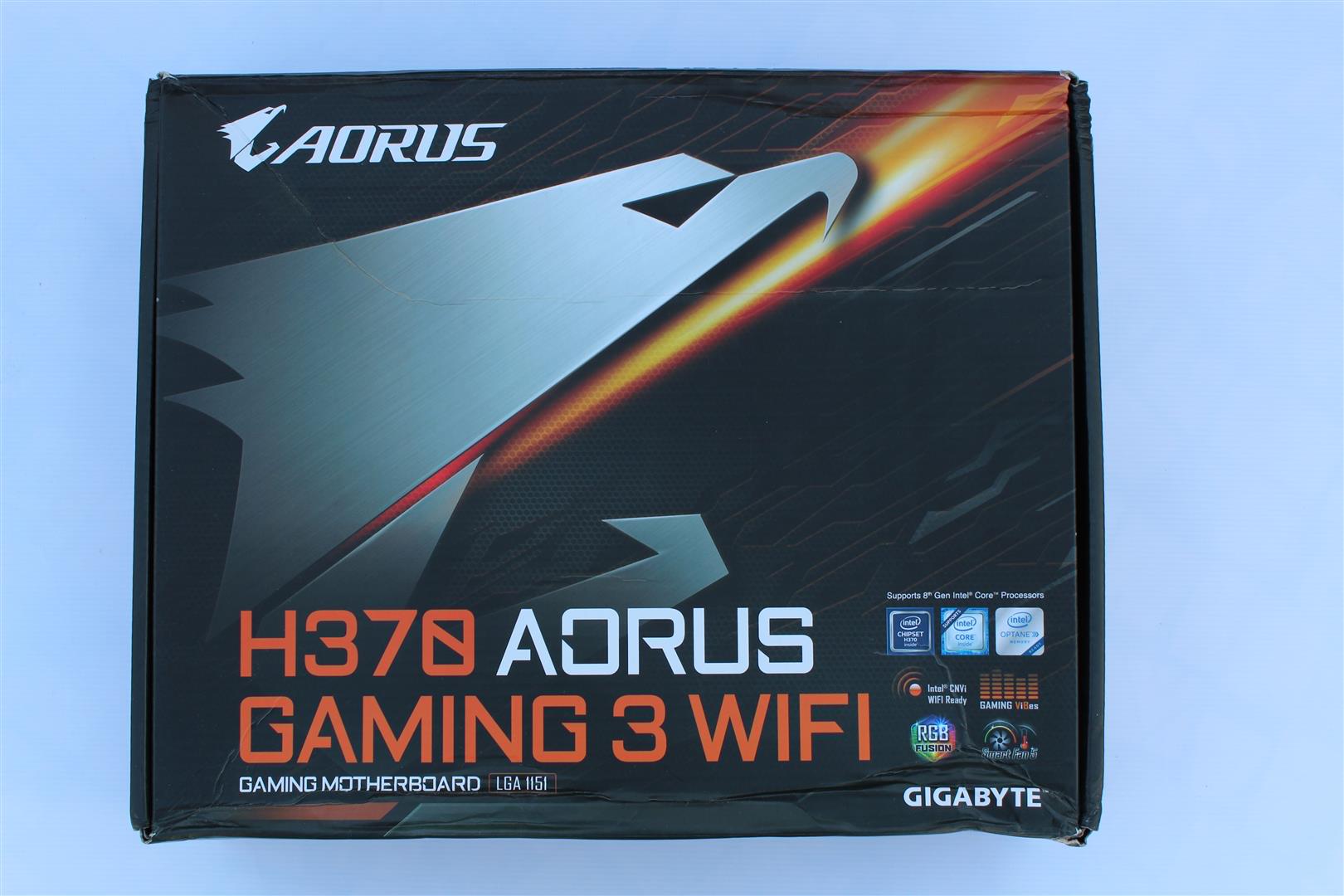
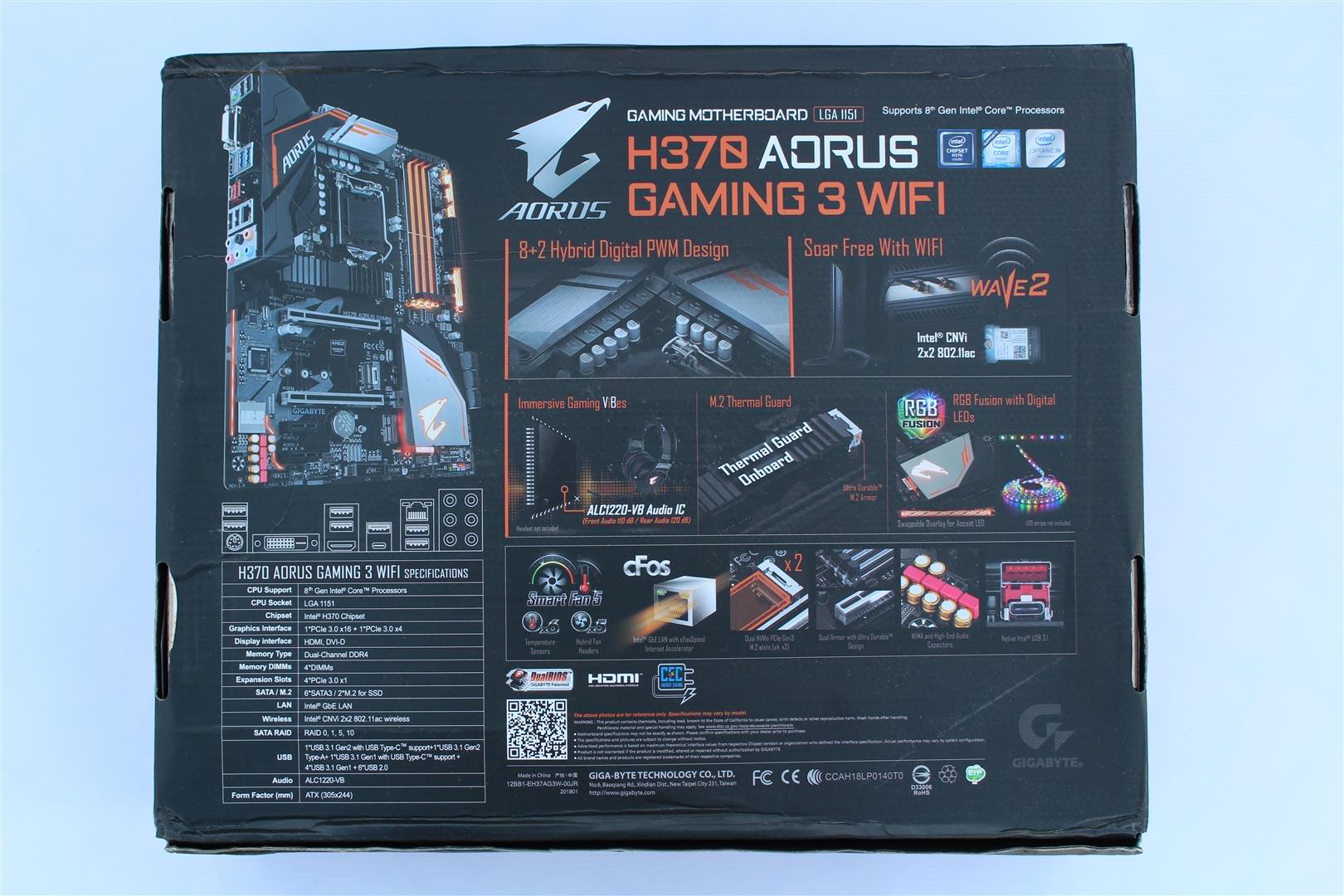
Inside the box
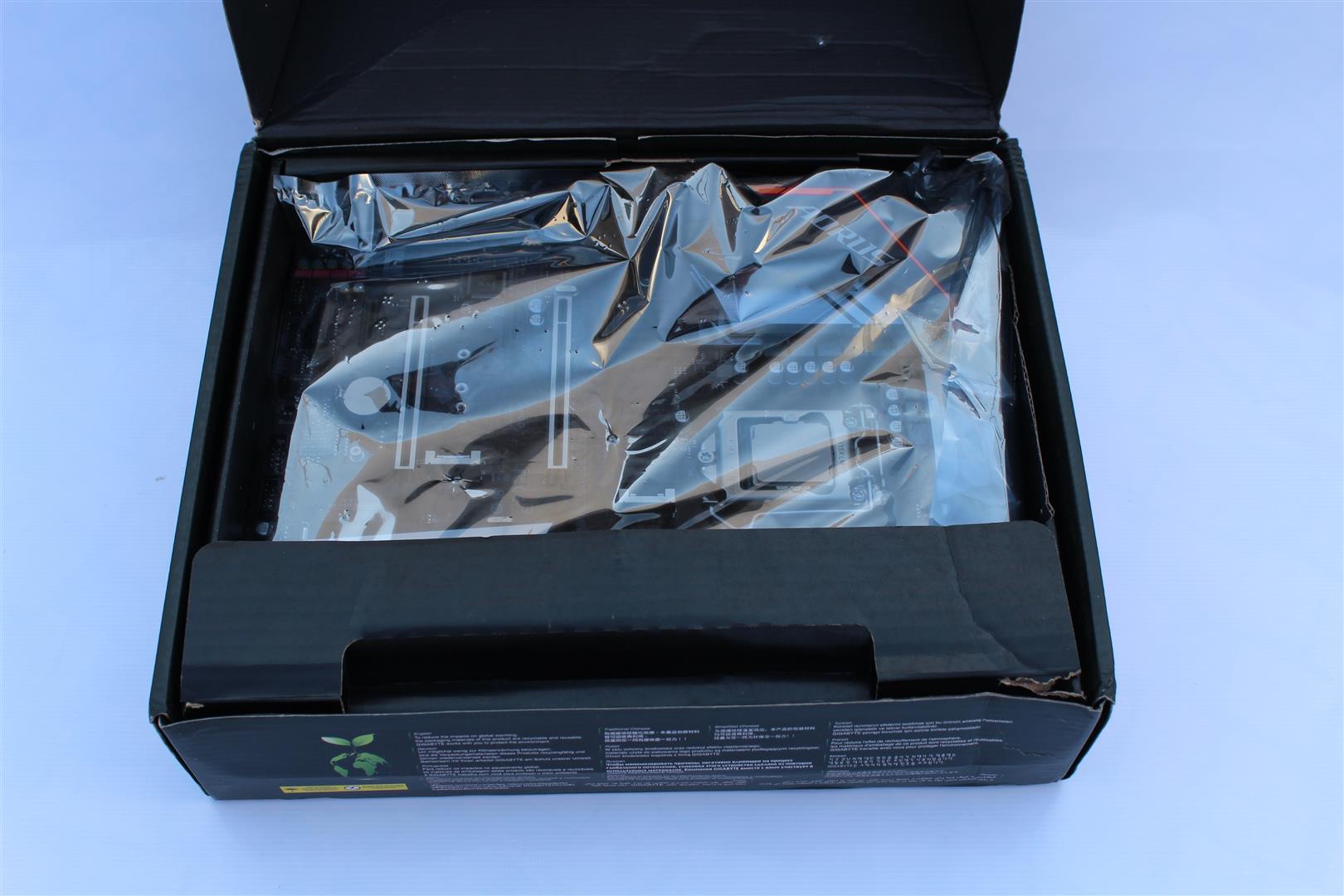
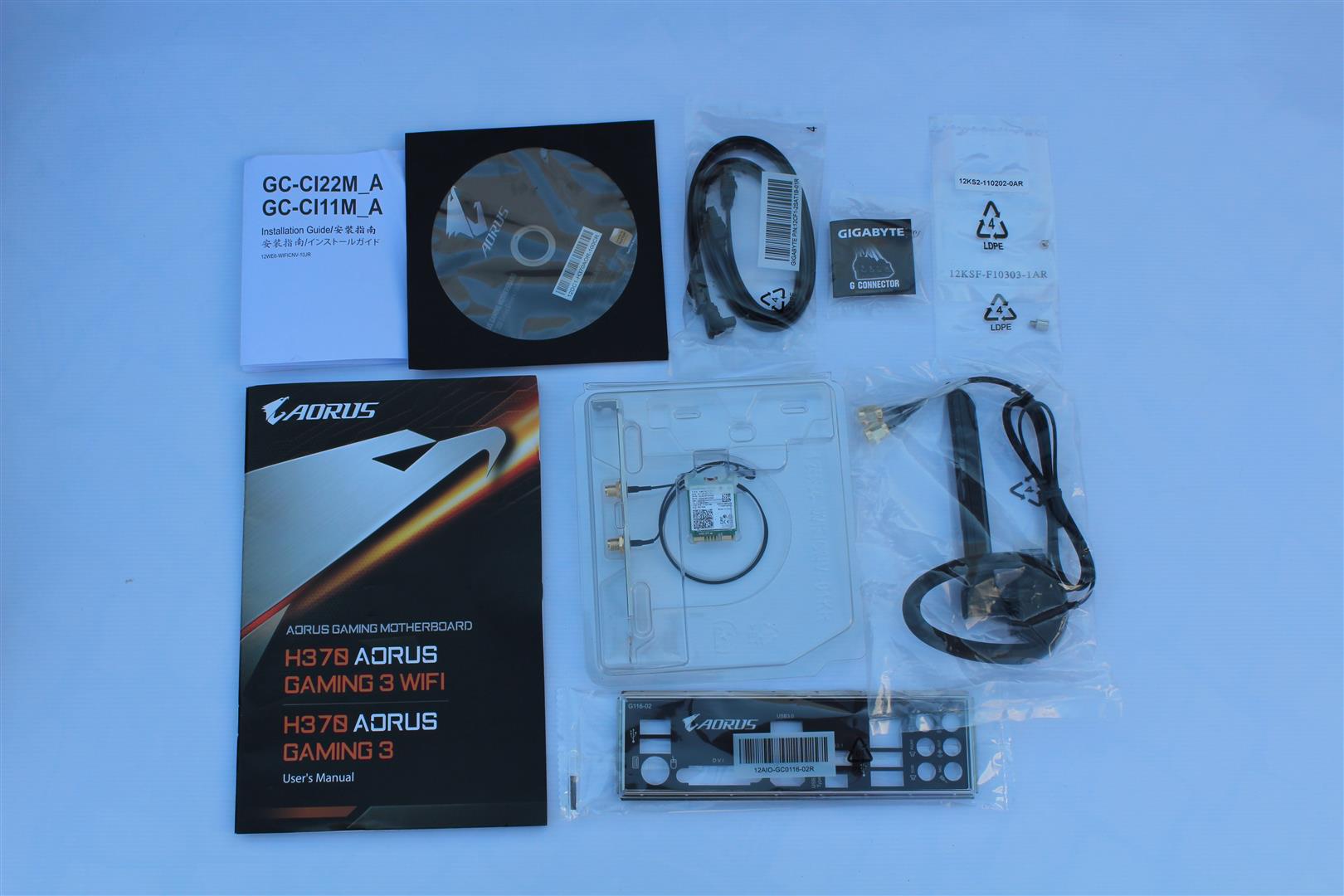
Looks
Board is a solid build on a black PCB with silver and little bit of orange colour theme gives the whole board an attractive looks.
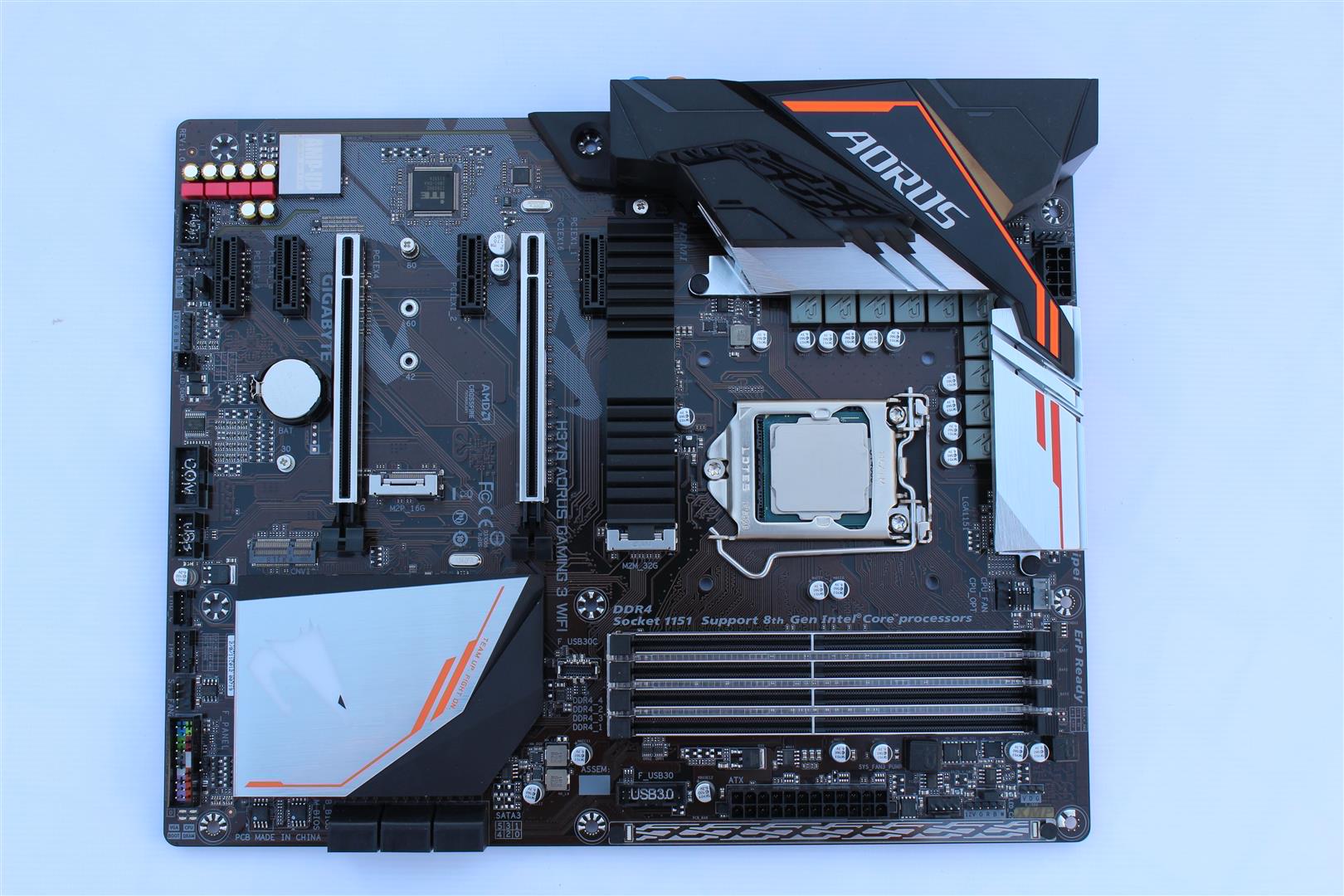
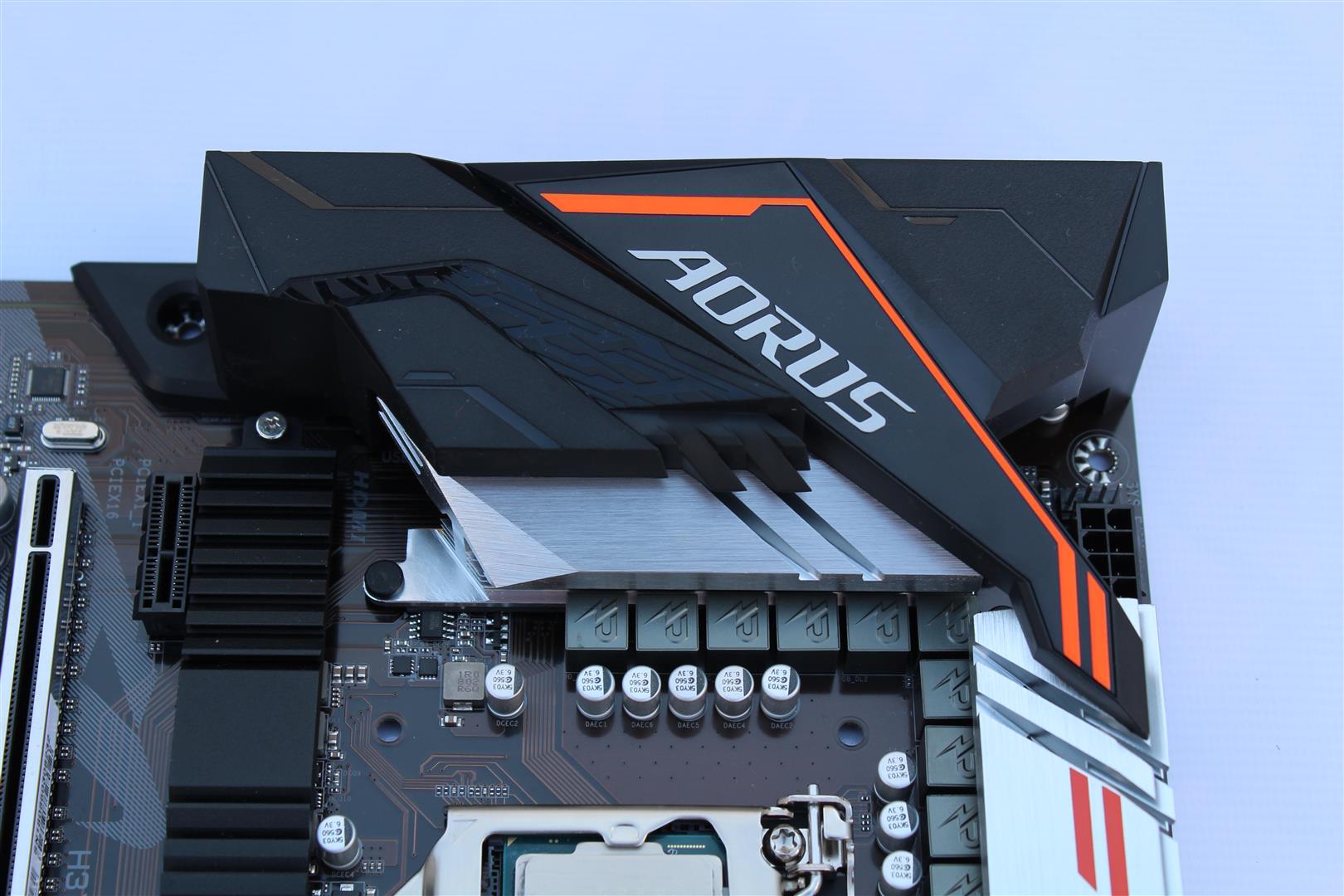
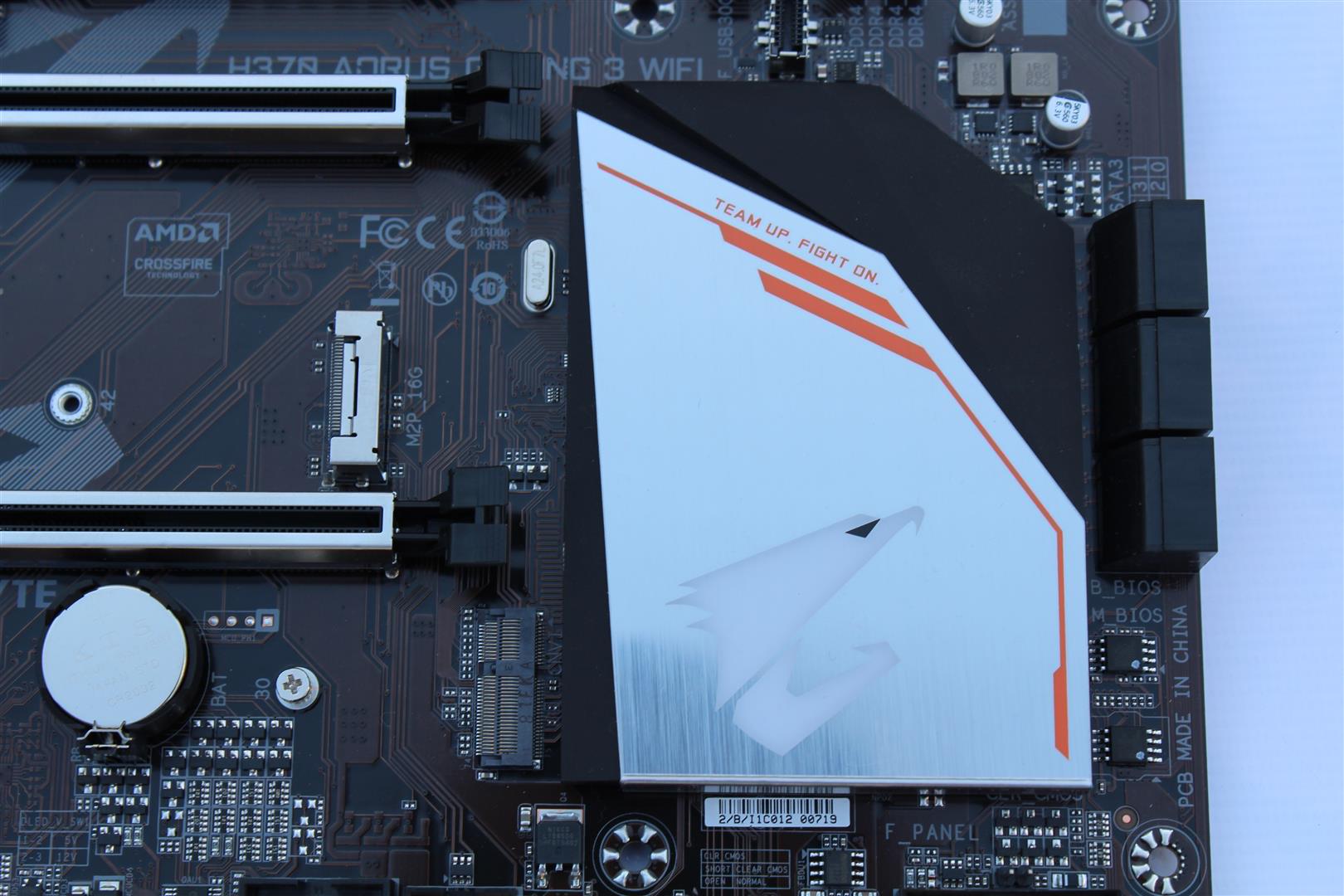
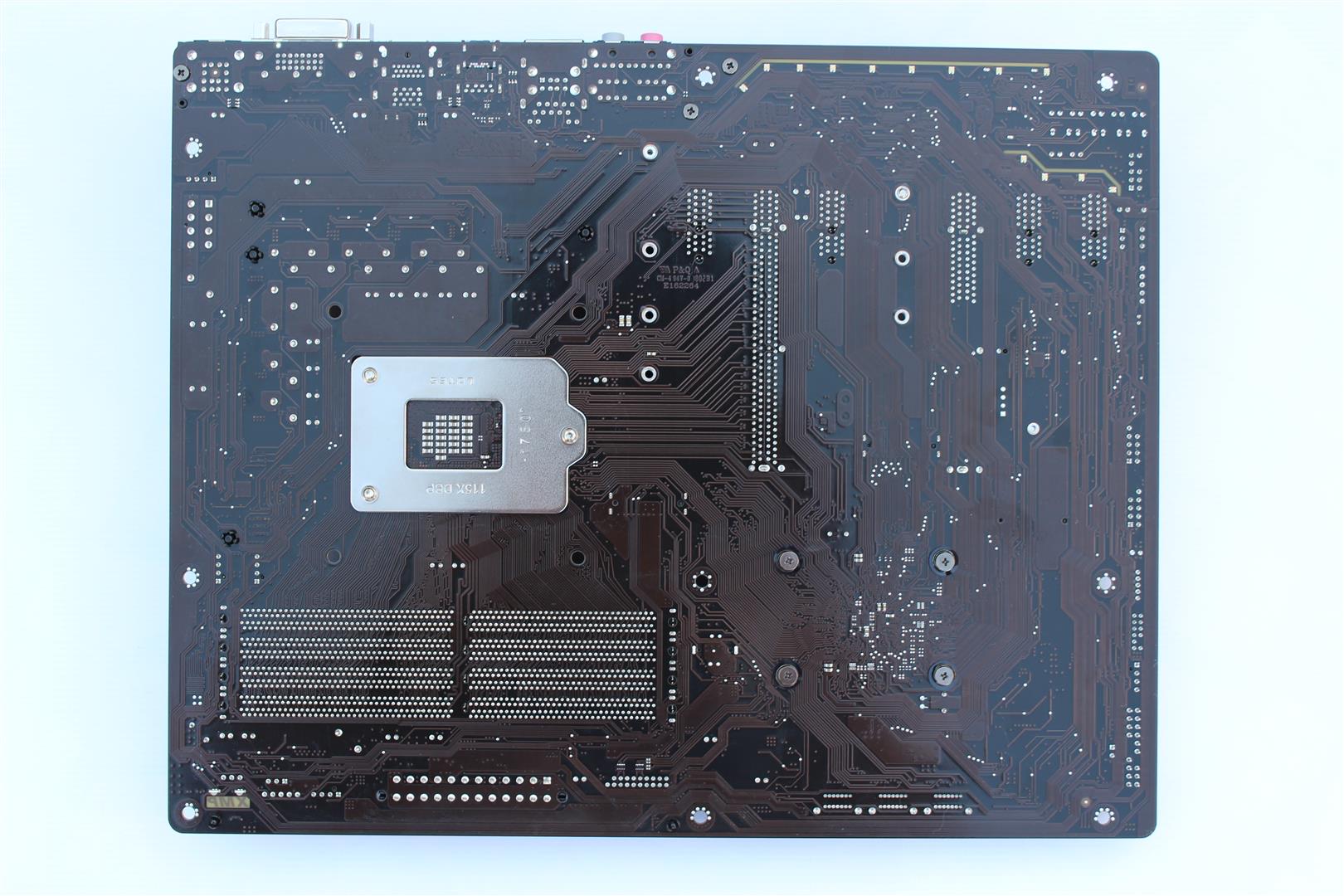
Layout
Detailed layout of board.
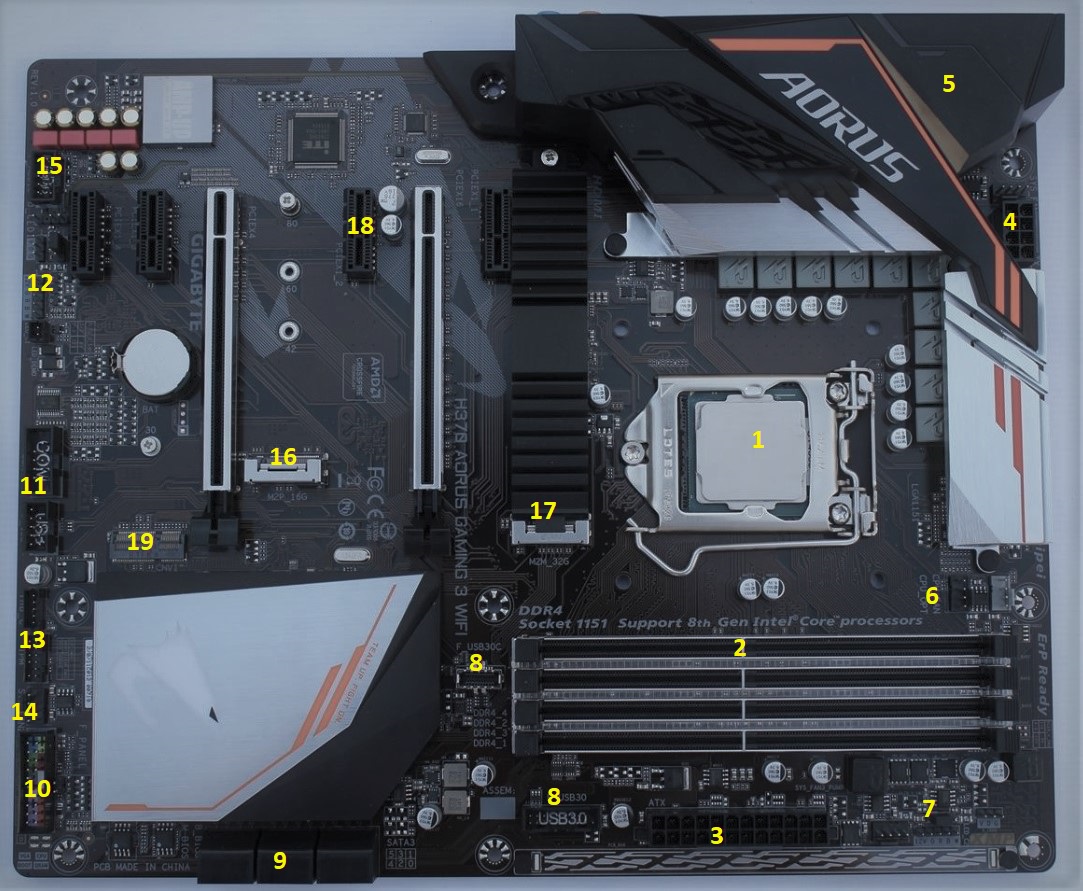
1. Intel LGA1151 socket, supporting New Intel’s 8th gen processors
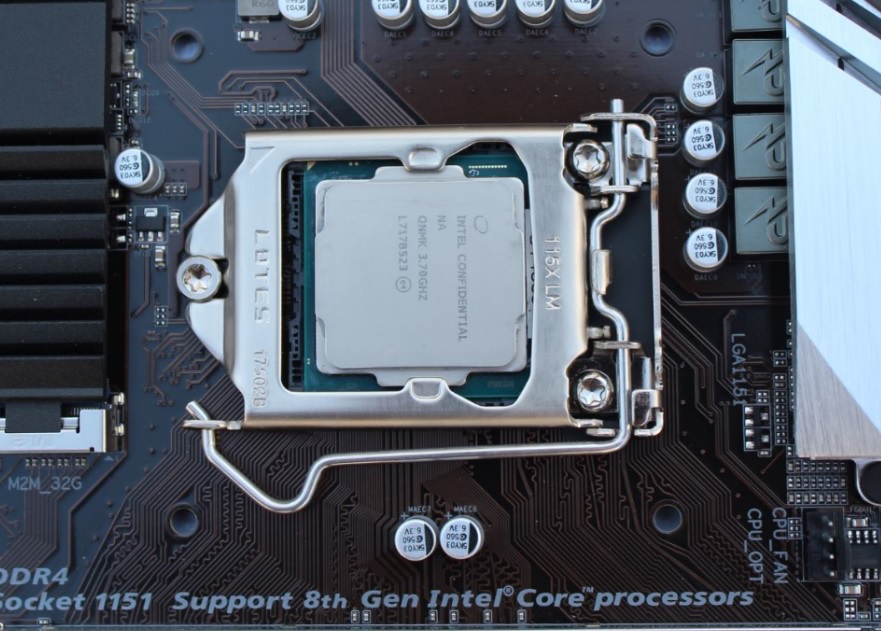
2. 4 DIMM Dual channel DDR4 memory slots with Armor supporting max. 64GB at 2666/2400/2133MHz and NO XMP support.
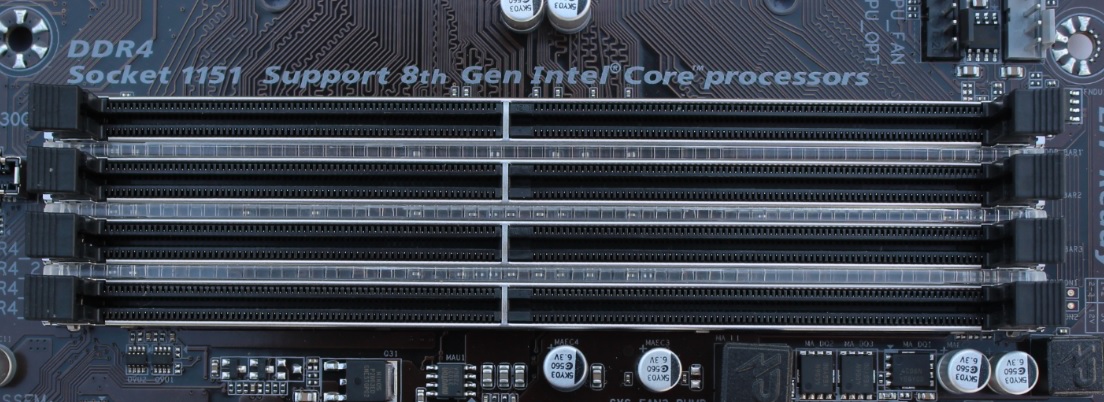
3. ATX Power connector (24-pin EATXPWR)
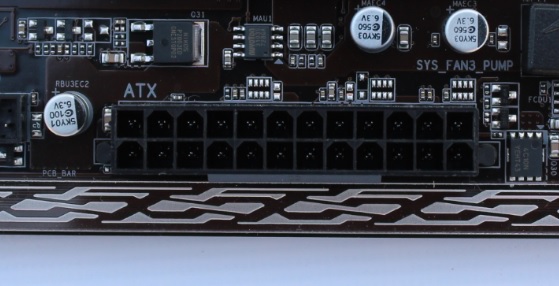
4. ATX CPU Power Connector (8-pin ATX12V).
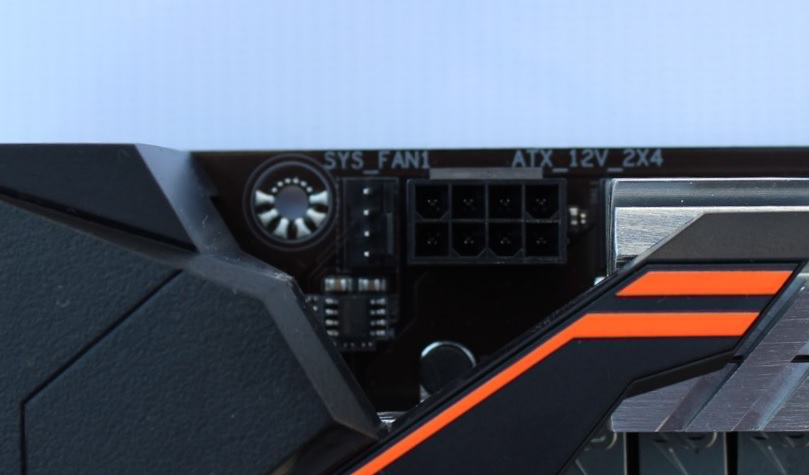
5. Back Panel Connectors : 1 x PS/2 keyboard/mouse port, 1 x DVI-D port, 1 x HDMI port, 1 x USB Type-C™ port, with USB 3.1 Gen 2 support, 1 x USB 3.1 Gen 2 Type-A port (red), 4 x USB 3.1 Gen 1 ports, 2 x USB 2.0/1.1 ports, 1 x RJ-45 port, 1 x optical S/PDIF Out connector, 5 x audio jacks (Center/Subwoofer Speaker Out, Rear Speaker Out, Line In, Line Out, Mic In)
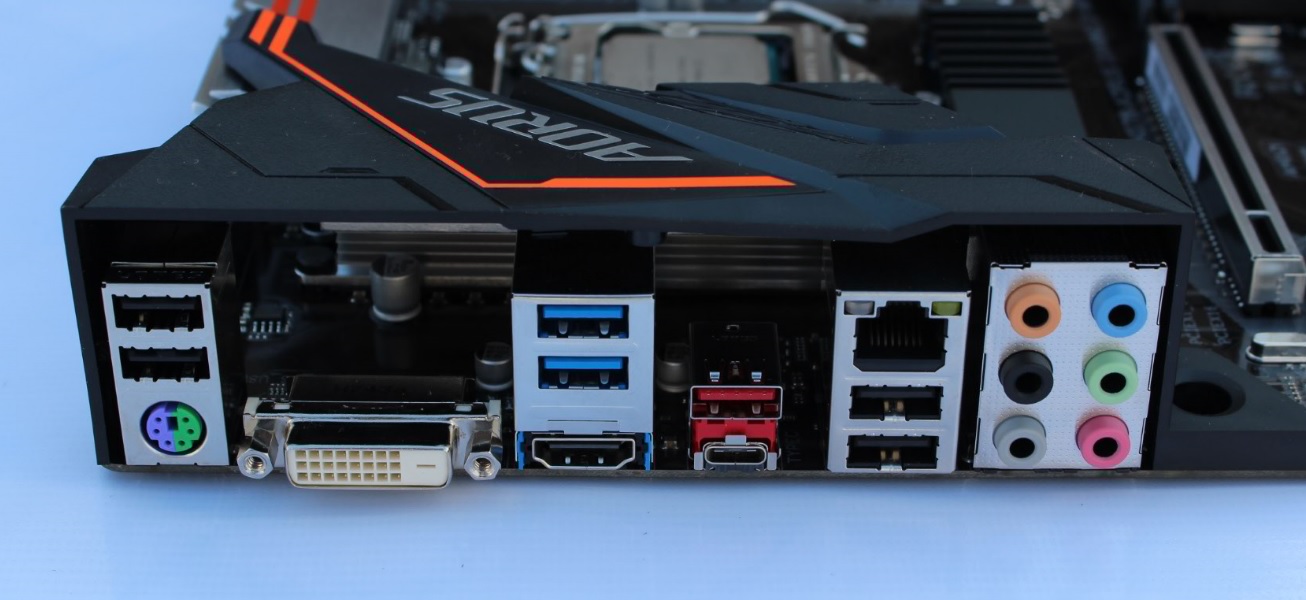
6. 7. 14.CPU fan connector, Water-pump-fan connector and 4 x system fan connectors
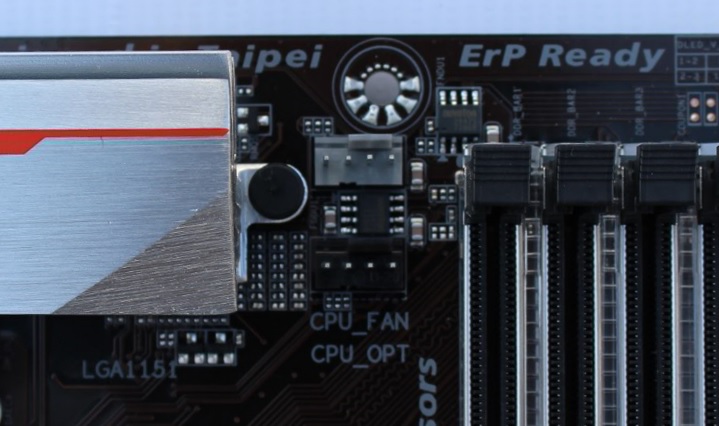
8. USB Type-C™ port, with USB 3.1 Gen 1 support and 1 x USB 3.1 Gen 1 header
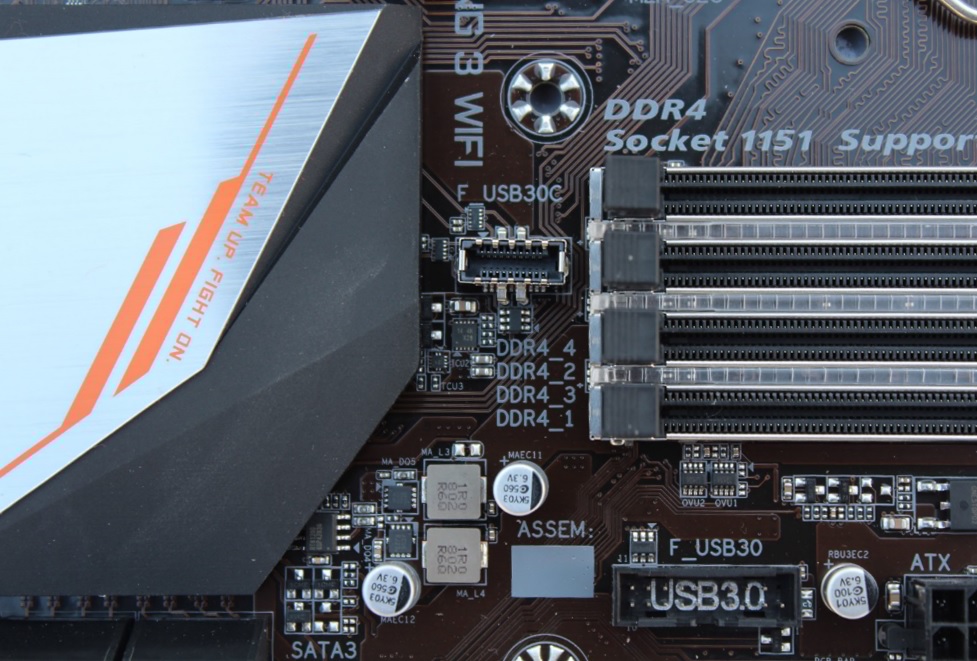
9. 6 x SATA 6Gb/s connectors
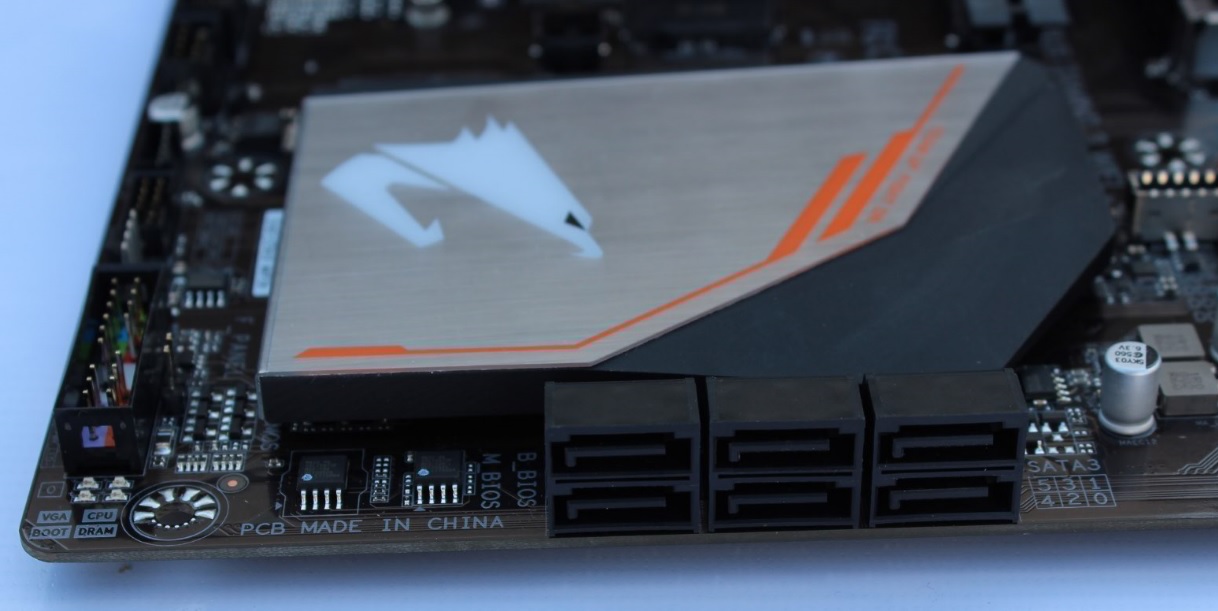
10. System Front panel Connector with different components debug LEDs
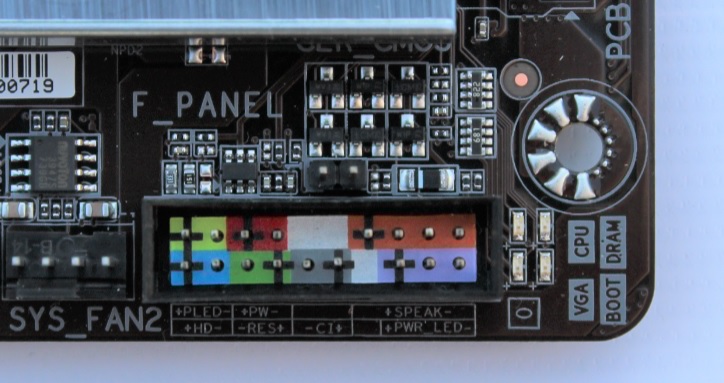
11. USB 2.0 and COM port Connectors
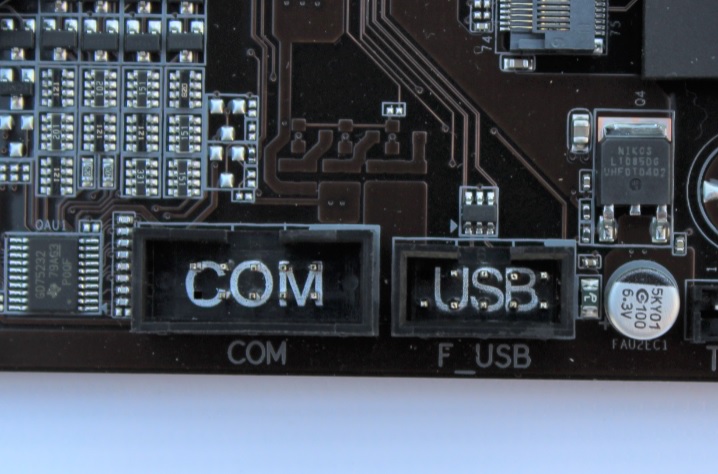
12. 7. AORUS H370 motherboard support dual RGBW LED strip and also 12V or 5V digital LED strips, rings, or matrices with the WS2812 LED Controller
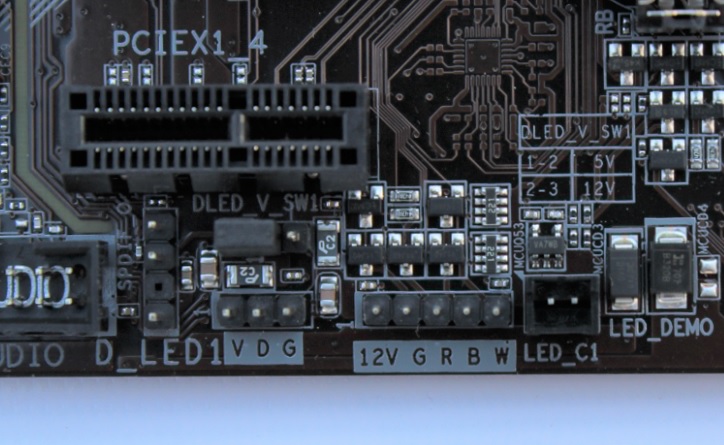
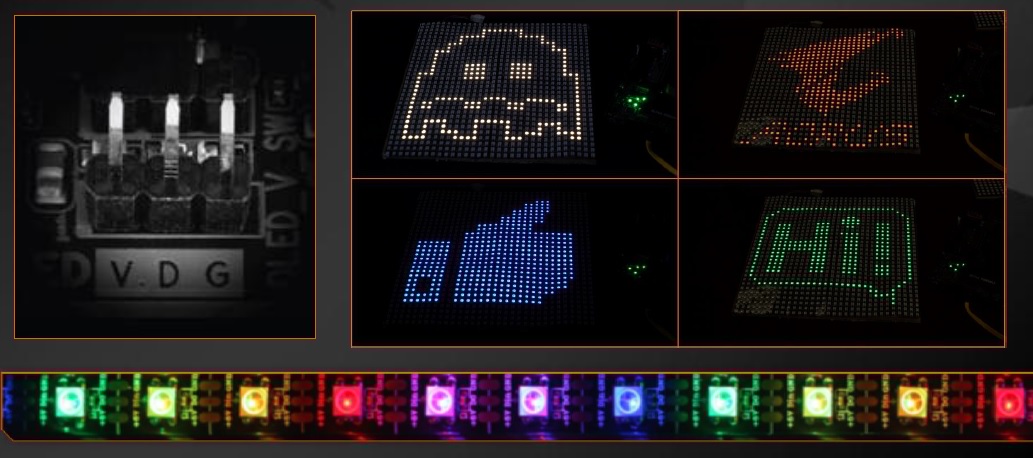
13. Thunderbolt headers and TPM Connector
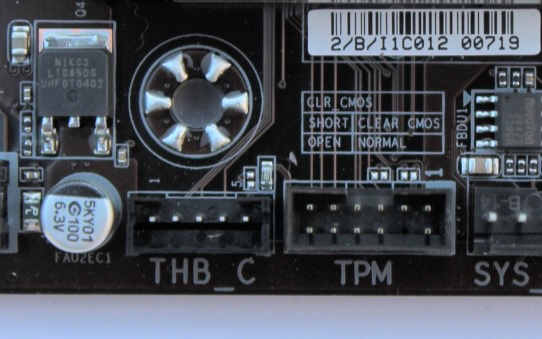
15. Front panel Audio connector
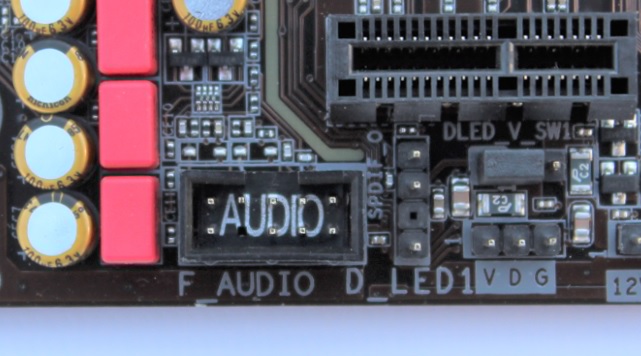
16. 17. Dual PCIe Gen3 x4 M.2 connector. With a PCIe NVMe + SATA dual mode design, users can build a RAID storage system with two NVMe M.2 SSDs or a SATA Mode M.2 SSD + a general SATA SSD. Designed for flexibility and adaptation to fit most users’ and gamers’ requests.
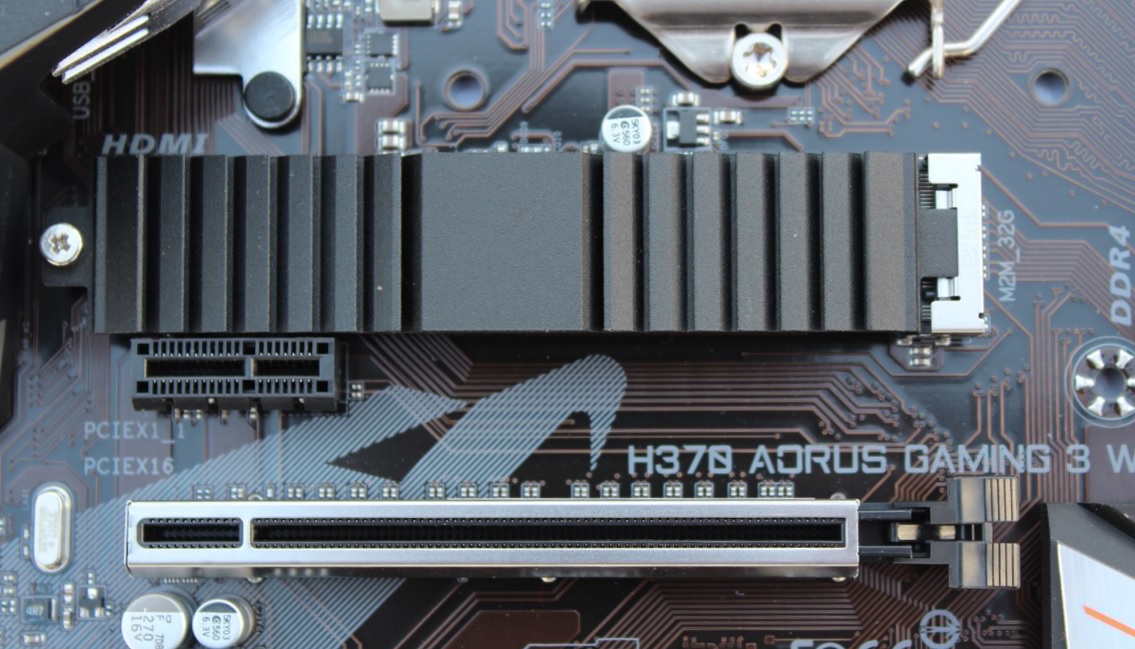
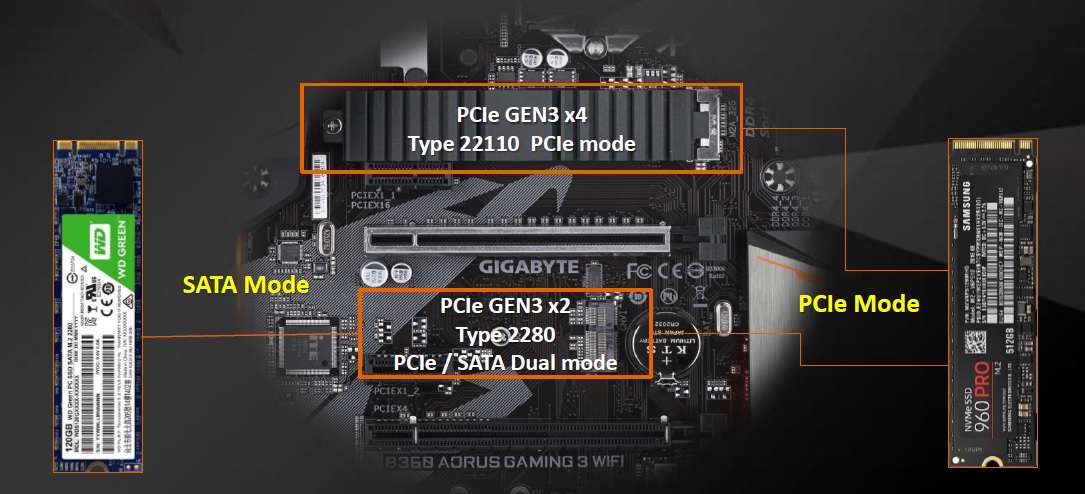
18. Expansion Slots : 1 x PCI Express x16 slot, running at x16 (PCIEX16), 1 x PCI Express x16 slot, running at x8 (PCIEX8), 4 x PCI Express x1 slots
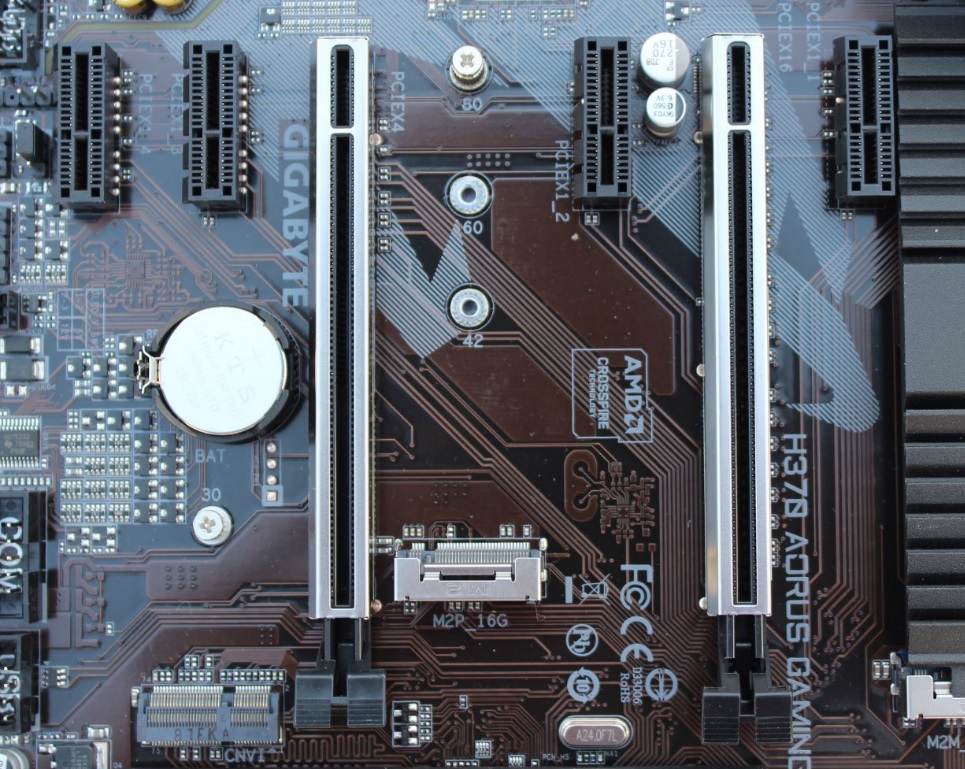
19. CNVI WIFI connector for installation of bundled Intel® CNVi 802.11ac Wave2 2T2R WIFI card
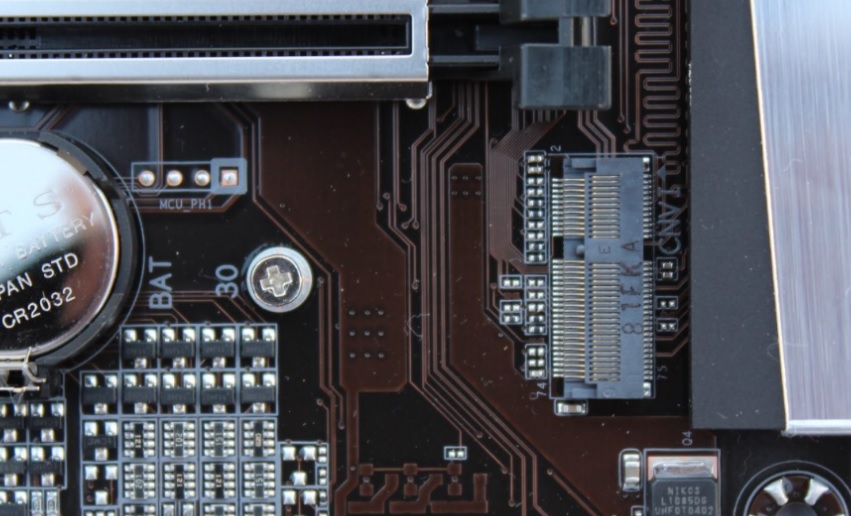
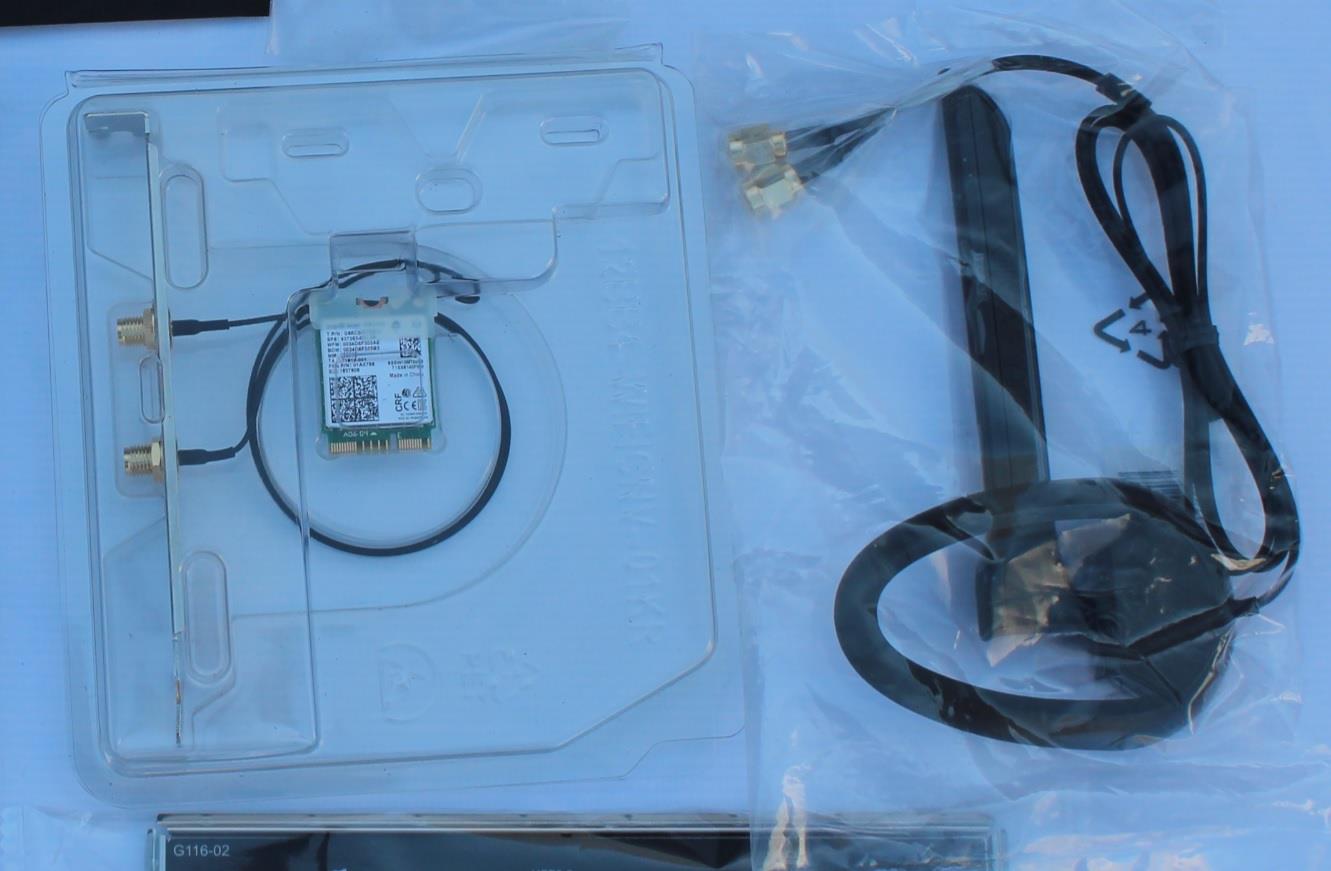
Intel CNVi Wave2 802.11ac 2x2 wireless solution enables 1733 Mbps maximum theoretical data rates, 2x faster than standard 802.11ac 2x2 (867Mbps), and nearly 12x faster than baseline 1x1 BGN (150Mbps), and even faster than a Gigabit Ethernet connection.
It’s improves in streaming, conferencing, gaming, data searing and downloading.
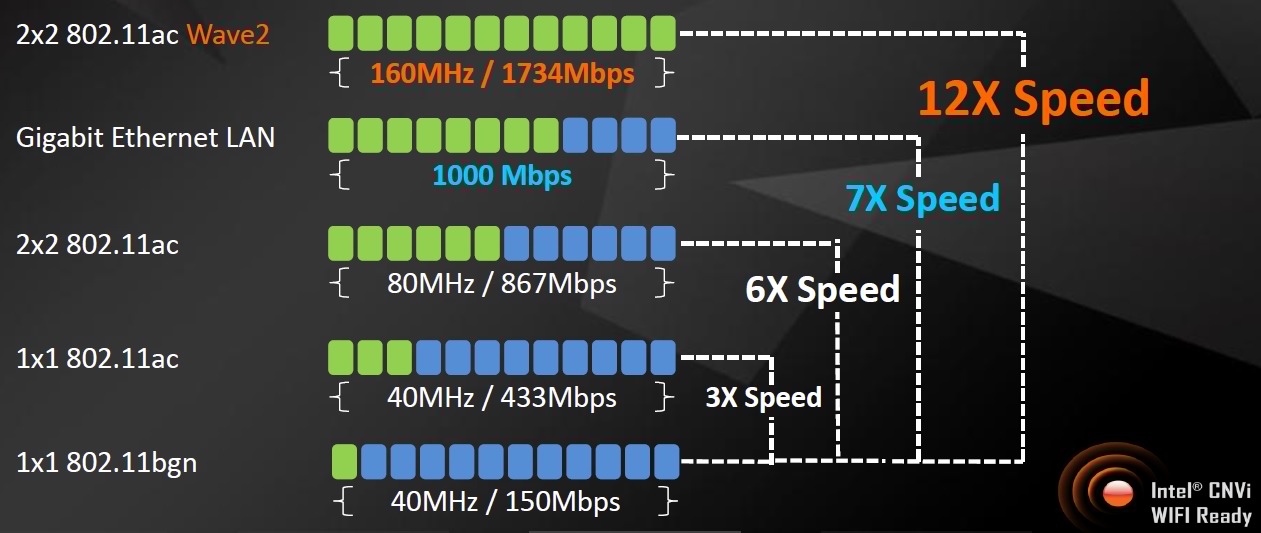
Removing Heat-sinks
AORUS used dense aluminum heatsink in this board. Heatsinks base is having thermal pad installed. Chipset heatsink is secured in place using screws and spacers, where as VRM heatsink used plastic plugs to secure them in place.
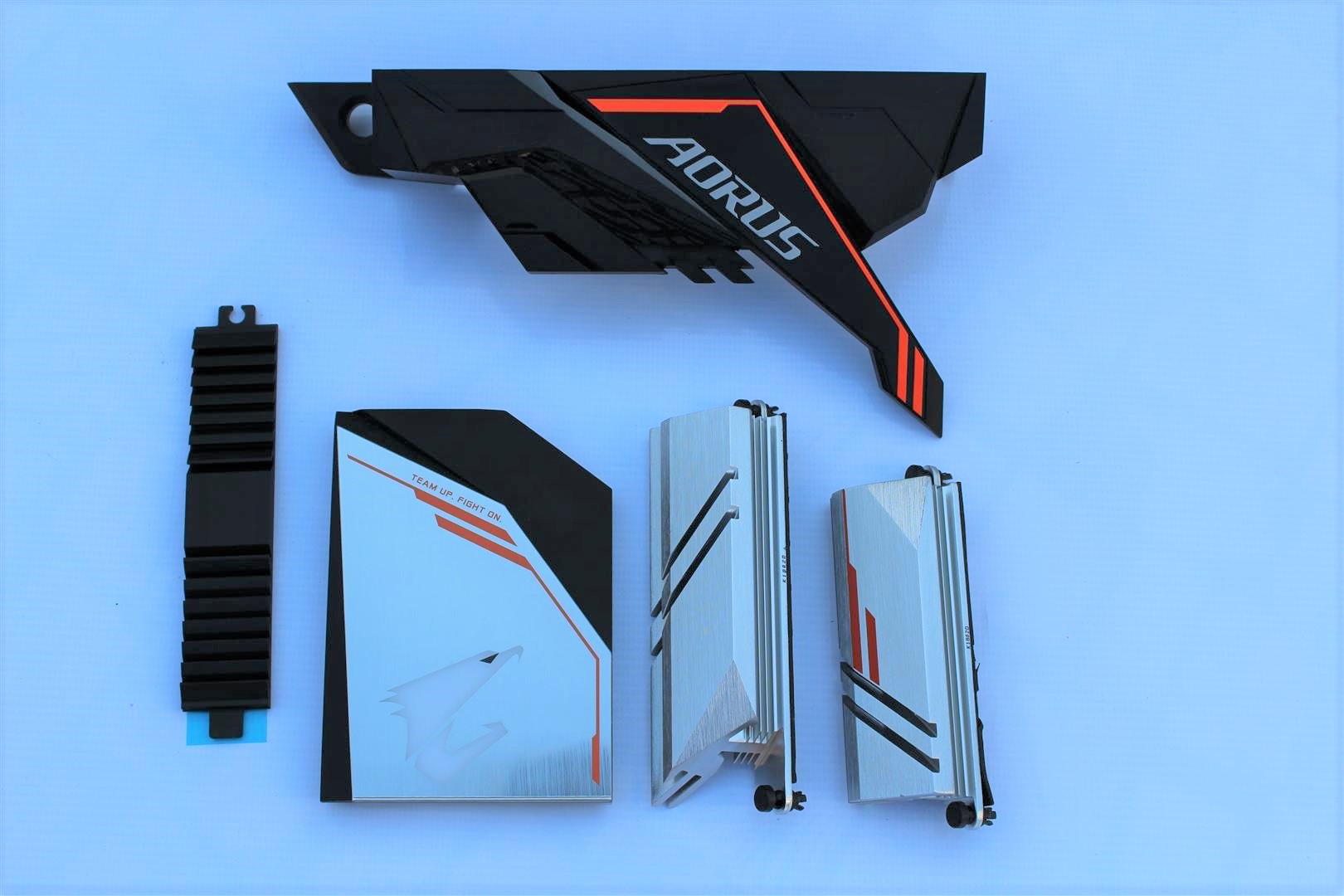
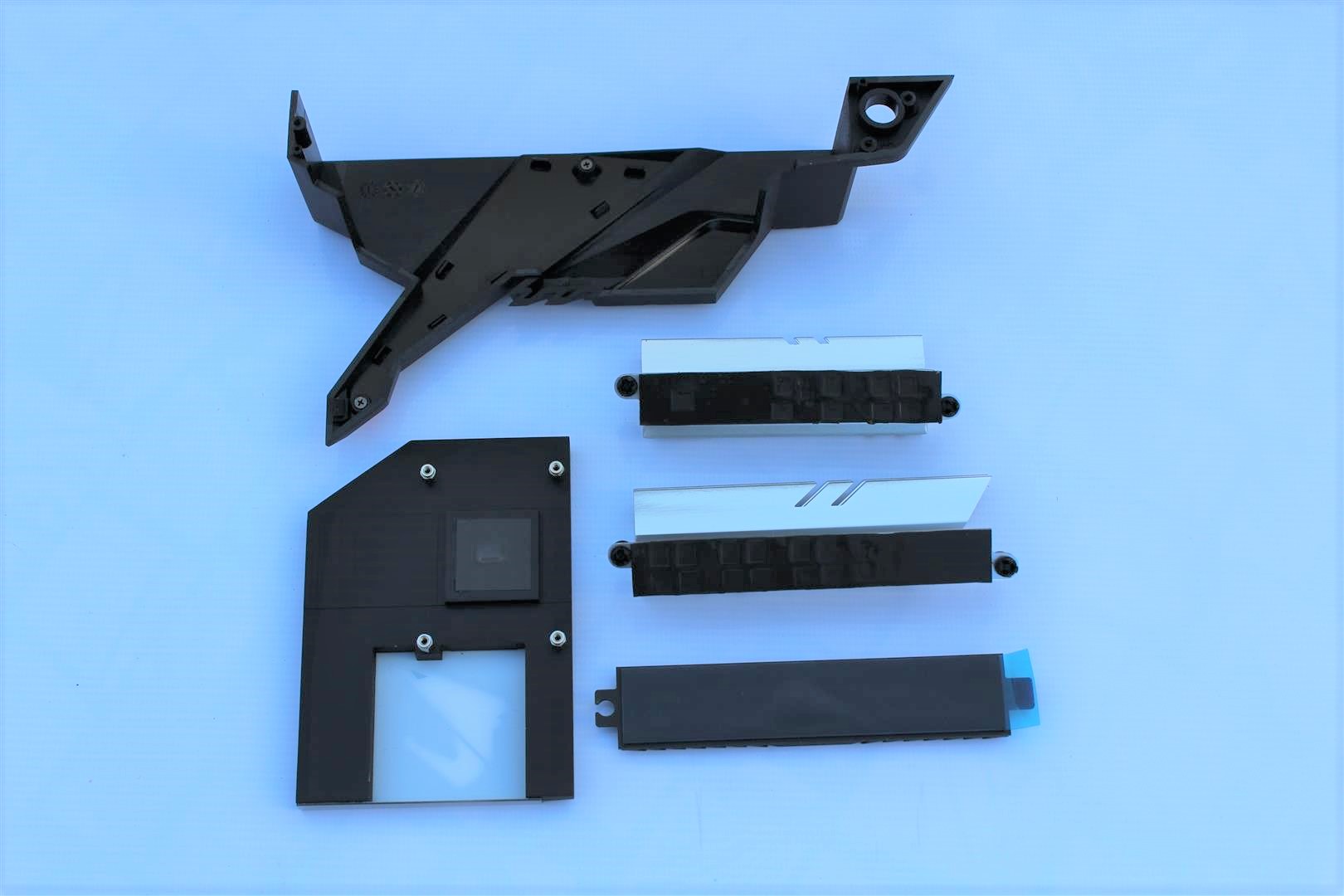
Component Layout
Let’s now see what all components AORUS have planned for this board.
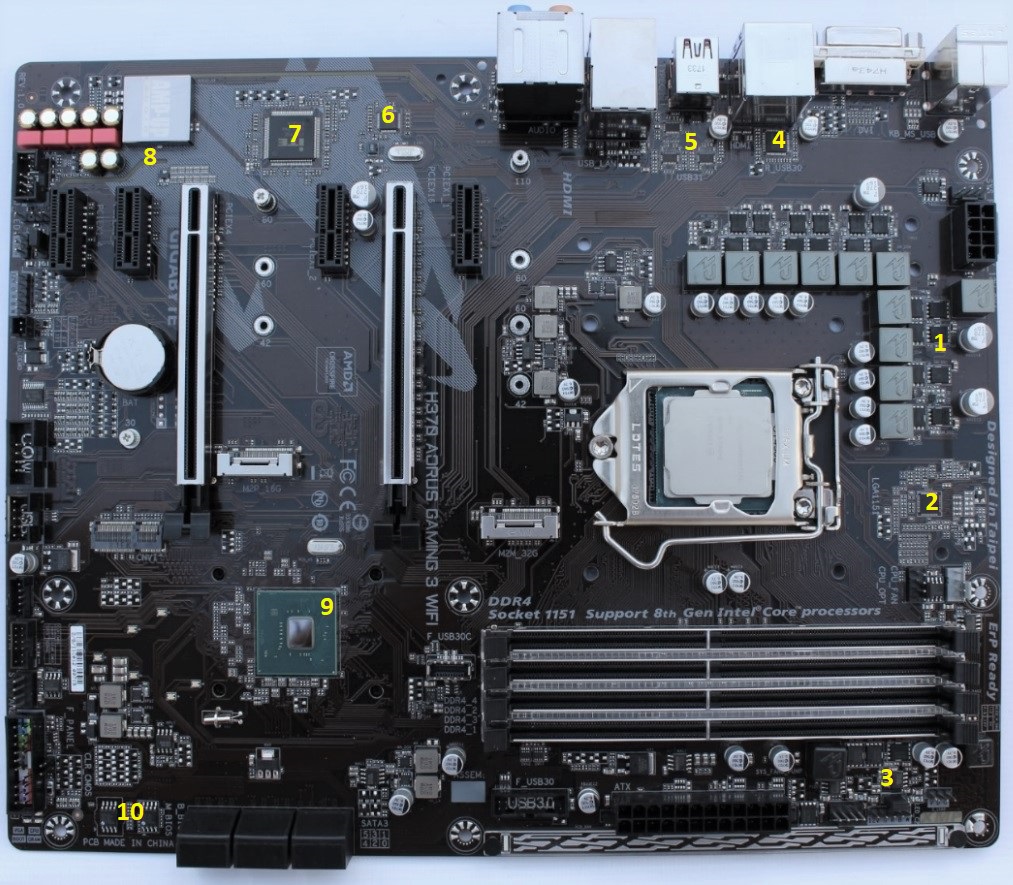
1. 2. CPU voltage regulator circuit has8+2 Phase PWM+ Lower RDS ON Semiconductor NTMFS 4C06N and 4C10N Power MOSFETS each with combined stage limited to 69A controlled by Intersil ISL95866 Hybrid Digital Four Phase PWM Controller supporting latest Intel 6 Core CPUs
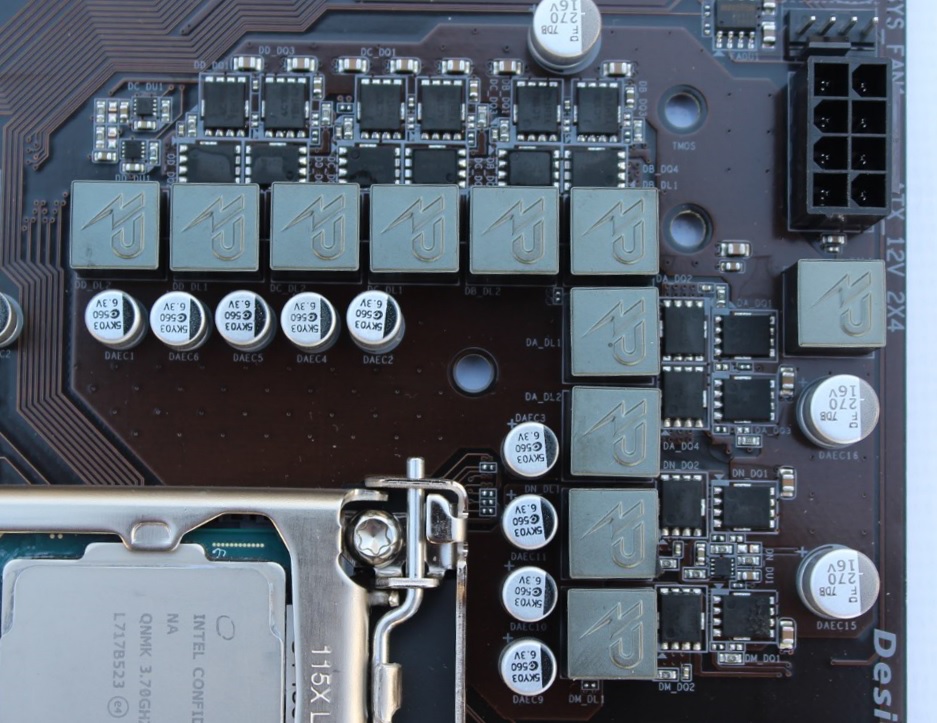
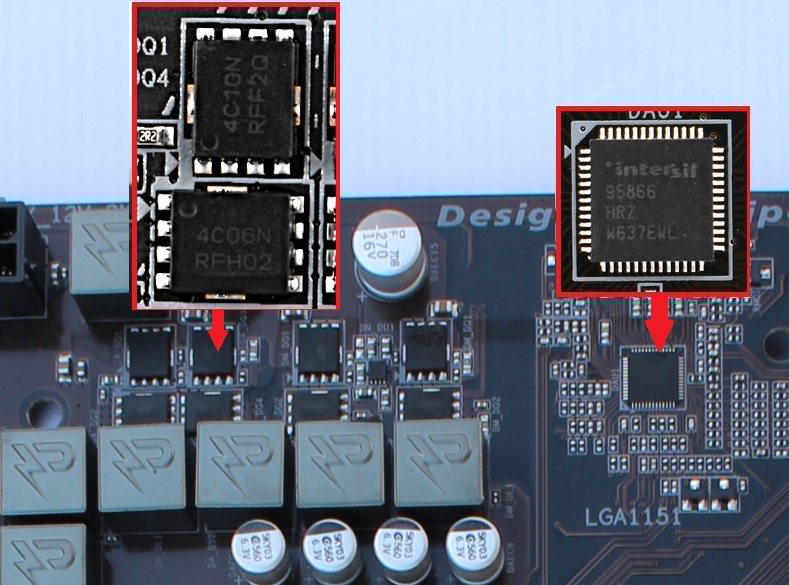
3. Single-Phase digital memory power supply section for DDR4 memories
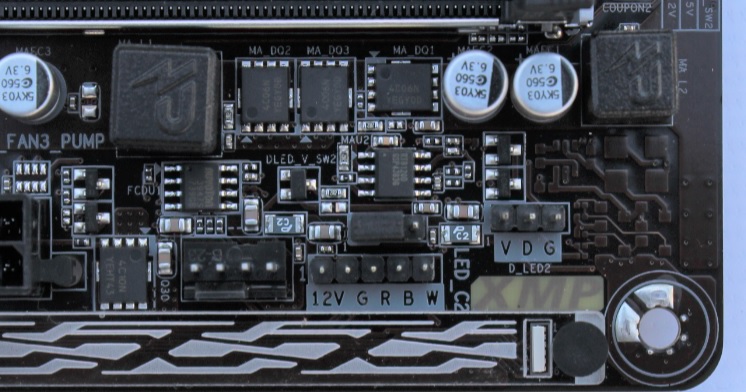
4. 5. PI3EQX1002B is PCIe-to-two-port USB 3.1 controllers and ASMedia ASM1442K single chip USB3.1 solution.
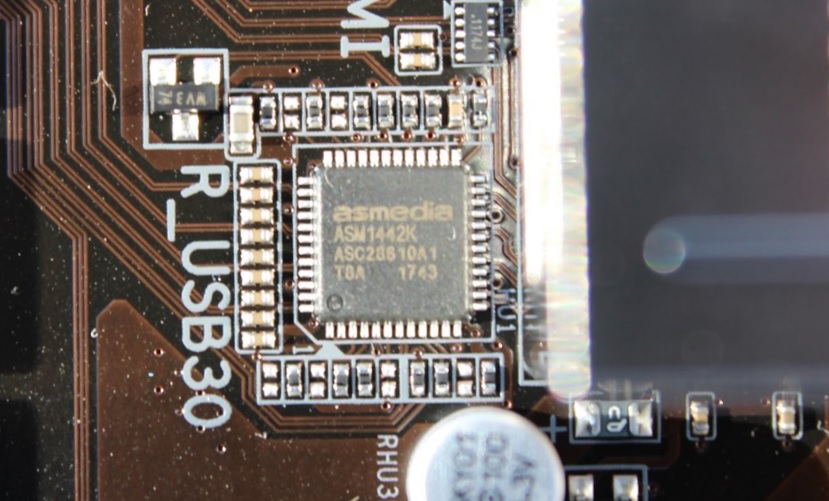
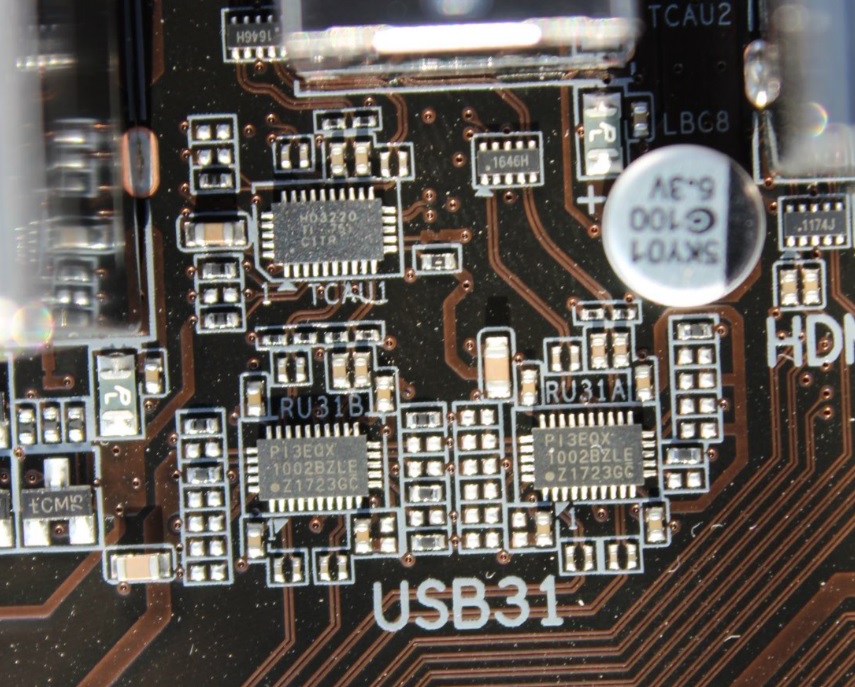

When the new Intel Coffee lake CPUs initially released, we only had the high-end Z370 chipset based motherboards available in market. But now Intel has officially announced their mainstream Intel chipset for Coffee lake support the H370 Express chipset, B360 Express chipset and the H310 Express chipset, all with socket LGA 1151support.
The Intel H370 chipset is the most interesting chipset for consumes. It is mostly the overclocking part cut out variant of Z370 chipset with the new Integrated Intel Wireless-AC Support (CNVi) and Intel RST SATA RAID 0, 1, 5,10 support.


Below are few of the benefit uses gets with the Intel 8th Generation Core Processor
- Increased multi-thread performance with up to 6 processor cores
- Enhanced IA & memory overclocking with unlocked processors
- "Always Available" with Modern Standby
- Enhanced system responsiveness with Intel® Optane™ memory
- Rec. 2020 & HDR for Blu-ray UHD playback
- 4K content with HEVC 10-bit HW decode and HDCP 2.2
- Fast browser & YouTube content viewing with VP9 HW decode
Today we are reviewing an Intel H370 chipset from AORUS, the AORUS H370 Gaming 3 WiFi motherboard a feature packed full ATX board supporting new Coffee lake processors, Dual Channel Non-ECC Unbuffered DDR4, Intel® CNVi 802.11ac Wave2 2T2R WIFI, RGB FUSION with Multi-Zone Digital LED Light support and more.

Now let’s see what this new Intel H370 chipset based AORUS gaming board have for us.
Features
- Supports 8th Gen Intel® Core™ Processors
- Dual Channel Non-ECC Unbuffered DDR4
- 8+2 Hybrid Digital PWM Design
- Intel® CNVi 802.11ac Wave2 2T2R WIFI
- ALC1220-VB with 114 (Rear)/110(Front) microphone in SNR, HD Audio with Smart Headphone AMP
- Dual Ultra-Fast M.2 with PCIe Gen3 X4/X2 (1 with Thermal Guard) & SATA interface
- RGB FUSION with Multi-Zone Digital LED Light Show design
- Intel ® Native USB 3.1 Gen 2 with USB Type-C™ and Type-A +Front USB 3.1 Gen 1 Type-C™ Header
- Intel® Ether LAN with CFOS Speed Internet Accelerator
- CEC 2019 Ready, Save the Power as Easy as One Click
- Smart Fan 5 features Multiple Temperature Sensors and Hybrid Fan Headers with FAN STOP
- Anti-Sulfur Resistors Design
- Ultra Durable™ 25KV ESD and 15KV Surge LAN Protection
- Intel® RST SATA RAID support
- Intel® Optane™ Memory Ready
Specifications

Package
Looking at the front of the box, we see AORUS logo with motherboard model no. in big at center of the box. At the rear of the box, we find that AORUS goes into great detail on the specifications of the motherboard


Inside the box


Looks
Board is a solid build on a black PCB with silver and little bit of orange colour theme gives the whole board an attractive looks.




Layout
Detailed layout of board.

1. Intel LGA1151 socket, supporting New Intel’s 8th gen processors

2. 4 DIMM Dual channel DDR4 memory slots with Armor supporting max. 64GB at 2666/2400/2133MHz and NO XMP support.

3. ATX Power connector (24-pin EATXPWR)

4. ATX CPU Power Connector (8-pin ATX12V).

5. Back Panel Connectors : 1 x PS/2 keyboard/mouse port, 1 x DVI-D port, 1 x HDMI port, 1 x USB Type-C™ port, with USB 3.1 Gen 2 support, 1 x USB 3.1 Gen 2 Type-A port (red), 4 x USB 3.1 Gen 1 ports, 2 x USB 2.0/1.1 ports, 1 x RJ-45 port, 1 x optical S/PDIF Out connector, 5 x audio jacks (Center/Subwoofer Speaker Out, Rear Speaker Out, Line In, Line Out, Mic In)

6. 7. 14.CPU fan connector, Water-pump-fan connector and 4 x system fan connectors

8. USB Type-C™ port, with USB 3.1 Gen 1 support and 1 x USB 3.1 Gen 1 header

9. 6 x SATA 6Gb/s connectors

10. System Front panel Connector with different components debug LEDs

11. USB 2.0 and COM port Connectors

12. 7. AORUS H370 motherboard support dual RGBW LED strip and also 12V or 5V digital LED strips, rings, or matrices with the WS2812 LED Controller


13. Thunderbolt headers and TPM Connector

15. Front panel Audio connector

16. 17. Dual PCIe Gen3 x4 M.2 connector. With a PCIe NVMe + SATA dual mode design, users can build a RAID storage system with two NVMe M.2 SSDs or a SATA Mode M.2 SSD + a general SATA SSD. Designed for flexibility and adaptation to fit most users’ and gamers’ requests.


18. Expansion Slots : 1 x PCI Express x16 slot, running at x16 (PCIEX16), 1 x PCI Express x16 slot, running at x8 (PCIEX8), 4 x PCI Express x1 slots

19. CNVI WIFI connector for installation of bundled Intel® CNVi 802.11ac Wave2 2T2R WIFI card


Intel CNVi Wave2 802.11ac 2x2 wireless solution enables 1733 Mbps maximum theoretical data rates, 2x faster than standard 802.11ac 2x2 (867Mbps), and nearly 12x faster than baseline 1x1 BGN (150Mbps), and even faster than a Gigabit Ethernet connection.
It’s improves in streaming, conferencing, gaming, data searing and downloading.

Removing Heat-sinks
AORUS used dense aluminum heatsink in this board. Heatsinks base is having thermal pad installed. Chipset heatsink is secured in place using screws and spacers, where as VRM heatsink used plastic plugs to secure them in place.


Component Layout
Let’s now see what all components AORUS have planned for this board.

1. 2. CPU voltage regulator circuit has8+2 Phase PWM+ Lower RDS ON Semiconductor NTMFS 4C06N and 4C10N Power MOSFETS each with combined stage limited to 69A controlled by Intersil ISL95866 Hybrid Digital Four Phase PWM Controller supporting latest Intel 6 Core CPUs


3. Single-Phase digital memory power supply section for DDR4 memories

4. 5. PI3EQX1002B is PCIe-to-two-port USB 3.1 controllers and ASMedia ASM1442K single chip USB3.1 solution.




